#challenge ; alphabet lineage
Explore tagged Tumblr posts
Text

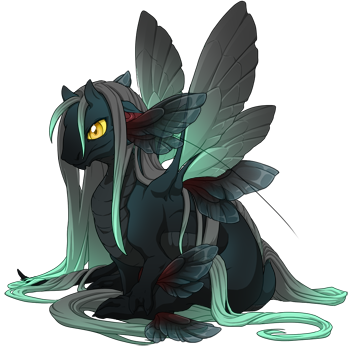

The B Generation for my Veilspuns hatched today :D Both hatchlings turned out really pretty I think. I'm keeping the one on the right. i love her. I love her green tips. I am keeping Azura and Aether I think. I love how these hatchlings turned out.
I don't know if they're the type of aesthetic people are looking for though. The C Generation is going to have a bit more colors.

It was surprisingly hard to find a Veil with a B Name.
2 notes
·
View notes
Text
NOMINATIONS ARE OPEN!
Nominations for the Black Emporium are live until July 1st! Reach out and tell someone (namely: us) about your favorite rare-pairs (namely: any pairing under 300 complete fics on Ao3 -- unless it's Rook, in which case it's 600, but you should really just go read the Rook guidelines). This year, you have FORTY nominations to use. Pairings can be twosomes / threesomes / moresomes / etc. We believe in sharing the love.
How do you, in fact, become a true Fereldan buckaroo by nominating a rare pair or 40?
Go to the Dragon Age Rare Pair Tag Set and click Nominate (you have to be signed into Ao3 for the button to appear). For inspiration or to check if someone had the same idea as you, we have a Searchable Nominations Spreadsheet that we manually update.
For more information on this stage of the exchange and how best to format your nominations, please see below the cut:
Full Participation Walkthrough Guide || FAQ
Important things to remember:
Pairings/groups must be nominated in order to be requested during the next phase of the exchange, Sign-Ups.
Nominations require a set format — keep reading for more details
All nominations should be under Dragon Age - All Media Types (for the first 20 nominations) and Dragon Age (Video Games) (for the second 20 nominations).
Pairings/groups cannot have more than 300 completed works on AO3. (Except Rook, whose limit is 600 completed works; see here for more info.)
We allow original characters in this exchange as well as canon characters.
Nominating a pairing/group is not “binding”; you do not need to request or offer the pairing later.
Nomination Formatting:
All nominations should be nominated under the "Dragon Age - All Media Types" and "Dragon Age (Video Games)" fandoms. Please only use the second option if you are nominating more than 20 relationships; this is because Ao3 does not let you nominate more than 20 in a single fandom. If you are nominating more than 20 relationships, please use "Dragon Age (Video Games)" as your FIRST fandom and "Dragon Age - All Media Types" as your SECOND.
Nominations do not need to auto-complete to be accepted; if Ao3 does not complete your ideal nomination, just type it in manually.
For romantic/sexual relationships, please nominate the characters you wish to nominate with a “/” between each character. For familial, platonic, or otherwise non-sexual requests, please use a “&.” e.g., “Meredith Stannard & Orsino” would not have any sexual or romantic undertones. “Meredith Stannard/Orsino” would be considered sexual and/or romantic, even if the fanwork itself didn’t include any sexual acts.
Nominations should be spelled correctly. e.g., “Merrill”, not “Meril”
Nominations should ideally be in alphabetical order, by last name. If a character does not have a last name, use the first name instead. e.g., “Zevran Arainai/The Iron Bull/Solas”
If a character has multiple names or aliases, go by their “main” name. e.g., “Blackwall”, not “Thomas ‘Thom’ Rainier”
For Dragon Age player-characters (such as the Warden, Hawke, and Inquisitor, etc.), we treat different surnames and gender as different characters. Female Surana will be evaluated differently from Female Brosca, Male Surana, etc.
Nominating Dragon Age “Player Characters”
For the purposes of this challenge, the Dragon Age protagonists will be considered different characters based on their gender and surname. The three gender options we utilize for this exchange are: Male, Female, and Nonbinary (written as NB to save space).
When nominating player characters that are not Rook, please format as such:
Male [Warden Surname / Hawke / Inquisitor Surname] (e.g., Male Trevelyan)
Female [Warden Surname / Hawke / Inquisitor Surname] (e.g., Female Hawke)
NB [Warden Surname / Hawke / Inquisitor Surname] (e.g., NB Brosca)
When nominating Rook, you must specify gender, lineage, and faction, in that order. Do not include "Rook" as part of the nomination; it's not needed. You must also put Rook FIRST in their ship, regardless of alphabetical order. For ships of 3+ people, make sure you alphabetize the other characters involved!
So, for example: "Male Qunari Ingellvar/Male Cousland" will be accepted as a nomination; "Rook/Warden" will not.
You can nominate pairings where one version of the pairing is over the limit as long as the version you nominate qualifies. For example, you can request "Male Lavellan/Solas" or "NB Lavellan/Solas," even if "Female Lavellan/Solas" is over the limit. This also applies to the ineligible Rook ships; "NB Dwarf Laidir/Lucanis Dellamorte" is acceptable but "Female Human de Riva/Lucanis Dellamorte" is ineligible.
Customized or individualized Wardens/Hawkes/Inquisitors are not valid nominations. For example, “Mary Trevelyan/Vivienne” would be ineligible; the requester would need to use “Female Trevelyan/Vivienne,” “Male Trevelyan/Vivienne” or “Nonbinary Trevelyan/Vivienne.”
In your prompts in your sign-up, you can request preferred details (such as specific OCs, a first name, looks, personality traits, class, background, etc.), and creators may choose to incorporate those elements into their gift for you. However, creators are not required to incorporate those preferred details, and works will not be checked for that by moderators.
Nominating Characters from Other Canons (i.e. Crossovers)
We allow crossovers from other series so long as they are interacting with at least one canonical character. However, when nominating a character from another specific series, please put the name of the fandom the character is from in parenthesis after the name, for example: “The Iron Bull & James Vega (Mass Effect)”
For crossovers that are from different media within the Dragon Age fandom, no specification is needed, e.g., “Merrill/Solas.”
Nominating Other Original Characters
Original Characters who are not Wardens/Hawkes/Inquisitors are also allowed to be nominated, provided they follow the following guidelines:
The OC is listed in such a way as to give someone freedom in how to write them.
OCs should be generalized or archetypal. e.g., “my OC Gerald D’Vivir” is too individualized and customized, but “Male Orlesian Noble” is eligible
A good rule of thumb here is whether the character idea can be summed up in 3 or less words; if you can, it is probably a good option. If you cannot, it probably is too complex for this kind of exchange. e.g., "Tal-Vashoth Mercenary" or "Original Templar Character" is eligible; but "Older Blonde Warrior Dwarven Warden Widower” is not
If the gender of an OC is considered important to your request, please include it. If you are fine with any gender option, gender does not need to be added, and the creator of the work can choose their choice of gender options for the character. e.g., "Orlesian Noble" or "Female Orlesian Noble”
The OC is not listed in such a way that would, essentially, reflect the spirit of a canon character that is otherwise not permitted in a relationship.
As an example, while it is possible to have an Original Female Elf Inquisitor who is not Lavellan, it is so close to canon based on that description that it would essentially function as the same character.
Lastly...
What are you waiting for? GET YE TO THE NOMINATING!
#be 2025#be nominations#be announcements#dragon age#black emporium rare pair exchange#black emporium
35 notes
·
View notes
Text
Career Legacy Challenge: Rules
A Sims 4 completionist legacy challenge that plays through all the careers while aiming to complete all collections, rewards, aspirations, degrees, skills, using all traits and worlds in-game.
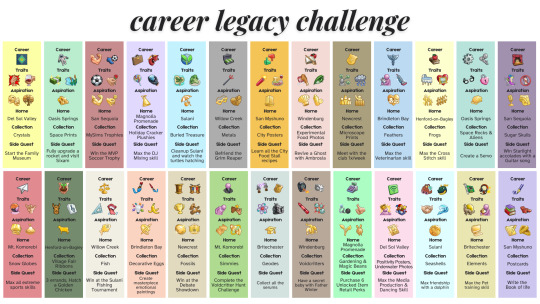
Basic Rules
Since there are 26 generations in all, heirs could be named alphabetically
Spouses must complete the other career track, unless there’s only one career branch
Spouses may complete the side quests, second aspiration, and/or after-school activity
University is optional except when an organization or an after-school activity is specified
The family museum should contain the collections, career rewards, and other memorabilia of the family. It can be a closed retail lot that is passed throughout the generations.
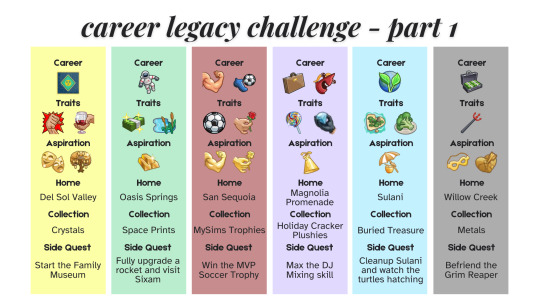
Generation A: Actor
Traits: Self-Assured, Snob Aspiration: Master Actor/Actress Aspiration Collection: Crystals Side Quest 1: Complete the Successful Lineage Aspiration Side Quest 2: Start the Family Museum
Optional: Home: Del Sol Valley Degree: Drama
Generation B: Astronaut
Traits: Materialistic, Loves Outdoors Aspiration: Fabulously Wealthy Collection: Space Prints Side Quest 1: Fully upgrade the rocket Side Quest 2: Go to Sixam
Optional: Home: Oasis Springs Degree: Physics: Space Ranger
Generation C: Athlete
Traits: Active, Romantic Aspiration: Serial Romantic Collection: MySims Trophies Side Quest 1: Win the MVP Soccer Trophy as a Soccer Team Player Side Quest 2: Complete the Bodybuilder Aspiration
Optional: Home: San Sequoia Degree: Biology: Bodybuilder
Generation D: Business
Traits: Cheerful, Kleptomaniac Aspiration: Party Animal Collection: Holiday Cracker Plushies Side Quest 1: Become a Senior Member of the Foxbury Spirit Squad Side Quest 2: Max the DJ Mixing skill
Optional: Home: Magnolia Promenade Degree: Economics: Investor
Generation E: Conservationist
Traits: Child of the Islands, Vegetarian Aspiration: Beach Life Collection: Buried Treasure Side Quest 1: Cleanup Sulani until it is thriving Side Quest 2: Watch a Tutle Hatching event
Optional: Home: Sulani Degree: Biology: Marine Biologist
Generation F: Criminal
Traits: Evil Aspiration: Public Enemy Collection: Metals Side Quest 1: Befriend the Grim Reaper Side Quest 2: Complete the Villainous Valentine Aspiration
Optional: Home: Willow Creek Degree: Villainy: Criminal Boss
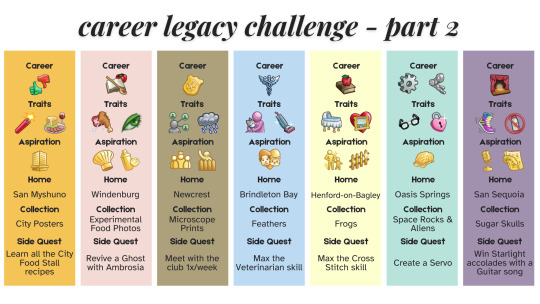
Generation G: Critic
Traits: Hot-Headed, Foodie Aspiration: City Native Collection: City Posters Side Quest 1: Learn all the City Food Stall recipes Side Quest 2: Buy all 5 Trash and Treasure items from the Flea Market
Optional: Home: San Myshuno Degree: Art History: Arts Critic
Generation H: Culinary
Traits: Glutton, Jealous Aspiration: Master Chef Collection: Experimental Food Photos Side Quest 1: Prepare Ambrosia and bring back a ghost to life Side Quest 2: Marry someone who will complete the Master Mixologist Aspiration
Optional: Home: Windenburg Degree: Culinary Arts: Chef
Generation I: Detective
Traits: Insider, Gloomy Aspiration: Leader of the Pack Collection: Microscope Prints Side Quest 1: Meet with the club at least once a week Side Quest 2: Complete the Neighborhood Confidante Aspiration
Optional: Home: Newcrest Degree: Psychology: Detective
Generation J: Doctor
Traits: Cat Lover, Neat Aspiration: Friend of the Animals Collection: Feathers Side Quest 1: Make a purple owl statue from another set of feathers Side Quest 2: Max the Veterinarian skill
Optional: Home: Brindleton Bay Degree: Biology: Doctor
Generation K: Education
Traits: Family-Oriented, Art Lover Aspiration: Super Parent Collection: Frogs Side Quest 1: Complete the Big Happy Family Aspiration Side Quest 2: Max the Cross Stitch skill
Optional: Home: Henford-on-Bagley Degree: Psychology: Professor
Generation L: Engineer
Traits: Geek, Unflirty Aspiration: Nerd Brain Collection: Space Rocks, Aliens Side Quest 1: Become a Senior Member of the Bot Savants Side Quest 2: Create a Servo
Optional: Home: Oasis Springs Degree: Physics: Mechanical Engineer
Generation M: Entertainer
Traits: Dance Machine, Lactose Intolerant Aspiration: Joke Star Collection: Sugar Skulls Side Quest 1: Win an award at the Starlight Accolades Side Quest 2: Complete the Musical Genius Aspiration with a Guitar
Optional: Home: San Sequoia Degree: Drama: Comedian
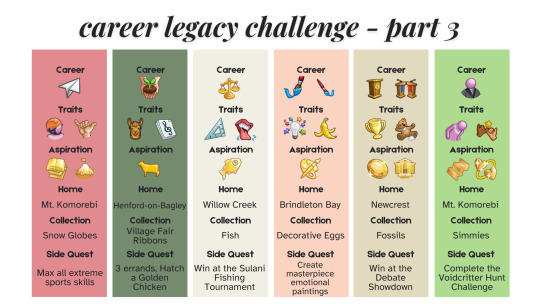
Generation N: Freelancer
Traits: Adventurous, Bro Aspiration: Extreme Sports Enthusiast Collection: Snow Globes Side Quest 1: Max all extreme sports skills Side Quest 2: Complete the Renaissance Sim Aspiration
Optional: Home: Mt. Komorebi Degree: Communications: Supervisor
Generation O: Gardener
Traits: Animal Enthusiast, Music Lover Aspiration: Country Caretaker Collection: Village Fair Ribbons (Main Competitions only since the Minor ones are bugged) Side Quest 1: Complete at least 3 errands Side Quest 2: Hatch a Golden Chicken
Optional: Home: Henford-on-Bagley Degree: Biology: Botanist
Generation P: Law
Traits: Perfectionist, Mean Aspiration: Angling Ace Collection: Fish Side Quest 1: Fish at Sylvan Glade and Forgotten grotto Side Quest 2: Win at the Sulani Fishing Tournament
Optional: Home: Willow Creek Degree: History: Judge
Generation Q: Painter
Traits: Creative, Clumsy Aspiration: Painter Extraordinaire Collection: Decorative Eggs Side Quest 1: Become a Senior Member of the Art Society Side Quest 2: Complete all emotional paintings with masterpiece quality
Optional: Home: Brindleton Bay Degree: Fine Arts: Master of the Real
Generation R: Politician
Traits: Ambitious, Hates Children Aspiration: The Curator Collection: Fossils Side Quest 1: Become a Senior Member of the Debate Guild and win at a Debate Showdown Side Quest 2: Complete the Mansion Baron Aspiration
Optional: Home: Newcrest Degree: History: Politics
Generation S: Salaryperson
Traits: Proper, Loyal Aspiration: Mt. Komorebi Sightseer Collection: Simmies Side Quest 1: Complete the Voidcritter Hunt Challenge Side Quest 2: Complete the Soulmate Aspiration
Optional: Home: Mt. Komorebi Degree: Computer Science: Expert
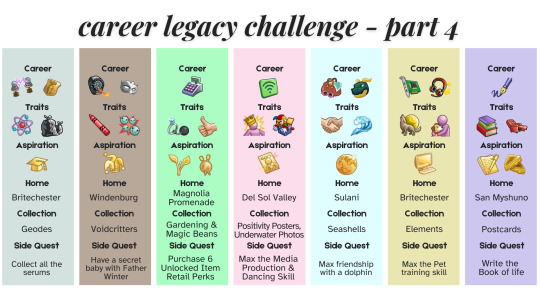
Generation T: Scientist
Traits: Genius, Slob Aspiration: Academic Collection: Geodes Side Quest 1: Become a Senior Member of The Brainiacs Side Quest 2: Create all the serums from The Chemistry Lab
Optional: Home: Britechester Degree: Physics: Scientist
Generation U: Secret Agent
Traits: Childish, Erratic Aspiration: Chief of Mischief Collection: Voidcritters Side Quest 1: Become a Senior Member of the Secret Society Side Quest 2: Have a secret baby with Father Winter
Optional: Home: Windenburg Degree: Villainy: Villain
Generation V: Self-Employed
Traits: Noncommittal, Good Aspiration: Freelance Botanist Collection: Gardening, Magic Beans Side Quest 1: Purchase 6 Retail Perks that unlock items (Placard: My First Simoleon, Provocative Pedestal, Stunning Sign, Snazzy Shirt, Register of Tomorrow, Placard: Fobbs 500) Side Quest 2: Complete the Lord/Lady of the Knits Aspiration
Optional: Home: Magnolia Promenade Degree: Communications: Management
Generation W: Social Media
Traits: Self-Absorbed, Goofball Aspiration: World-Famous Celebrity Collection: Positivity Posters (Buy them from a pre-made retail lot), Underwater Photos Side Quest 1: Max the Media Production Skill Side Quest 2: Max the Dancing skill
Optional: Home: Del Sol Valley Degree: Drama: Internet Personality
Generation X: Style Influencer
Traits: Outgoing, Child of the Ocean Aspiration: Friend of the World Collection: Seashells Side Quest 1: Become a Senior Member of the Britechester Spirit Corps Side Quest 2: Max friendship with a dolphin
Optional: Home: Sulani Degree: Fine Arts: Stylist
Generation Y: Tech Guru
Traits: Loner, Dog Lover Aspiration: Computer Whiz Collection: Elements Side Quest 1: Reach the top of the eSports Competitor career in University Side Quest 2: Max the Pet training skill
Optional: Home: Britechester Degree: Computer Science: Start-Up Entrepreneur
Generation Z: Writer
Traits: Bookworm, Lazy Aspiration: Bestselling Author Collection: Postcards Side Quest 1: Write the Book of life Side Quest 2: Complete the Grilled Cheese Aspiration
Optional: Home: San Myshuno Degree: Language and Literature: Author
#sims 4 legacy#sims 4 generations#legacy challenge#the sims 4#chellescripts#sims 4 challenge#sims#sims 4#ts4#career legacy#career legacy challenge
190 notes
·
View notes
Text
The A to Z of Plausible Deniability: Taylor Swift’s 2019 Vogue Interview, Decoded
https://www.vogue.com/article/taylor-swift-cover-september-2019
Hey Kids! Spelling Is Fun!
There are a few moments in Taylor Swift’s career that fans point to as definitive—words etched in stone, used to silence entire communities of listeners. Chief among them? One quote from her 2019 Vogue cover story, often held up as the nail in the coffin of Gaylorism. And yet, as with everything in Swift’s world, what seems like a clear declaration rarely is.
When she said, “I didn’t realize until recently that I could advocate for a community I’m not a part of,” many saw it as a disavowal.
But those of us who’ve studied her work closely—who’ve listened deeply, read between every line, counted every beat and coded phrase—understood something different. That wasn’t a confession. It was a cover.
In this essay, I’ve taken the 2019 Vogue article apart chronologically, letter by letter—twenty-six meticulously crafted sections, each corresponding to a letter of the alphabet. Why? Because Taylor is nothing if not deliberate, and the only way to honor the intricacy of her storytelling is to mirror it with equal care.
From Allyship to Zooming Out, we’ll explore the breadcrumbs she’s left us, the plausible deniability she’s mastered, and the coded queerness that pulses through every paragraph of this interview.
Welcome to The A to Z of Plausible Deniability. Let’s start spelling.
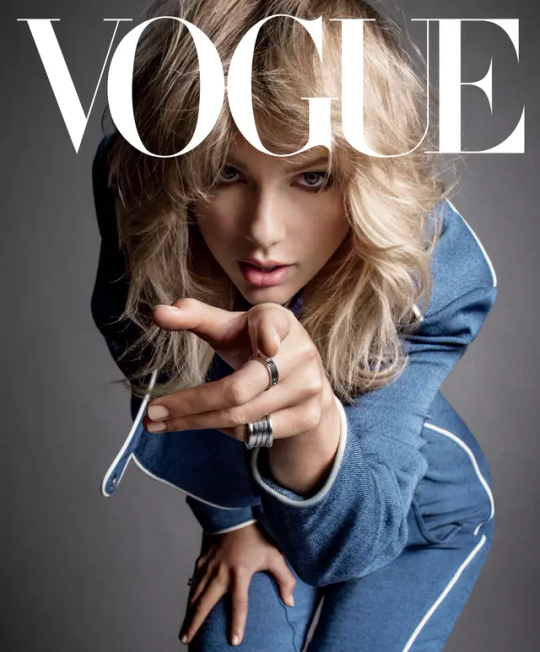
A — Allyship or Authority?
In the second and third paragraphs of the Vogue article, the author describes the star-studded, rainbow-saturated set of “You Need to Calm Down.” It’s a gay wonderland: Hayley Kiyoko shooting arrows, the cast of Queer Eye sipping tea, and Todrick Hall holding court. At the center of it all? Taylor Swift—literally cast as the sheriff of this queer town.
This visual begs the question: would all of these openly queer artists sign on to uplift and center a straight woman’s vision of queerness if it were just that—straight? Would a “sheriff” character not feel weirdly self-appointed unless it was someone already accepted by the community she’s symbolically policing for?
If Taylor were purely an outsider to the LGBTQ+ community, the optics of this video might feel off—like performative allyship bordering on appropriation. But instead, these queer creatives joined her vision. That doesn’t prove anything definitive, of course, but it does challenge the idea that Swift was simply “borrowing” queerness for optics. The role she plays in that trailer-park utopia feels more like one of quiet authority.

B — Byzantine Breadcrumbs
In paragraph six, the Vogue author confesses: “I hadn’t understood how coded and byzantine her body of work had become; I hadn’t learned, as Swift fans have, to see hidden meanings everywhere.” This is a powerful observation—and one that Gaylors have long embraced as a cornerstone of Swift’s artistry.
The word Byzantine isn’t just poetic. It’s specific. It implies complexity, secrecy, and intentional obfuscation—a storytelling style that thrives on symbol and structure. It mirrors the way Swift weaves metaphors, numbers, time-stamped references, and narrative misdirection into her public-facing work.
This is where plausible deniability enters the chat. Taylor gives her audience enough—just enough to be interpreted—but never so much that anything is definitively confirmed. She can’t be “proven” one way or another. And that’s the point. This isn’t just fan projection—it’s a blueprint. The layered, coded nature of her work invites analysis because it’s crafted to sustain multiple truths at once.
When Swifties reduce this system to “easter eggs for the next album,” it undercuts the literary, poetic, and queer-coded lineage of what she’s actually doing. She’s not just teasing projects—she’s hiding a whole life in plain sight.
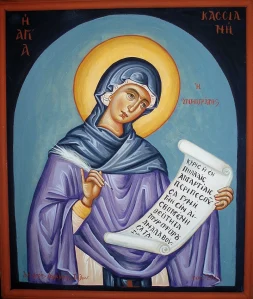
C — Codes, Clues, and Calculations
In paragraph eight, the author writes: “Apprehending the Taylor Swift Universe is like grasping quantum physics.” It’s a nod to the sheer complexity of her work, but more than that, it validates the way many fans—particularly Gaylors—approach Taylor’s art: through close reading, detailed timelines, and intertextual analysis.
This isn’t a stretch. Taylor loves numbers. She codes her life in them. From referencing “Track 5” songs as emotionally significant, to dropping albums and music videos on symbolically loaded dates (like Pride Month, or Lesbian Visibility Day), there is historical precedent for believing she crafts with intention.
So when Gaylors notice the consistent use of numbers like 8 and 3—Karlie Kloss’s birthday—or see mirrored timestamps and patterns emerge across albums, it isn’t “reaching.” It’s reading. It’s noticing the very kind of symbolic complexity Taylor herself says she values.
To reduce these patterns to coincidence is to ignore the deep, ongoing conversation she’s having with her audience. She knows how to whisper through art. The question is: who’s listening?
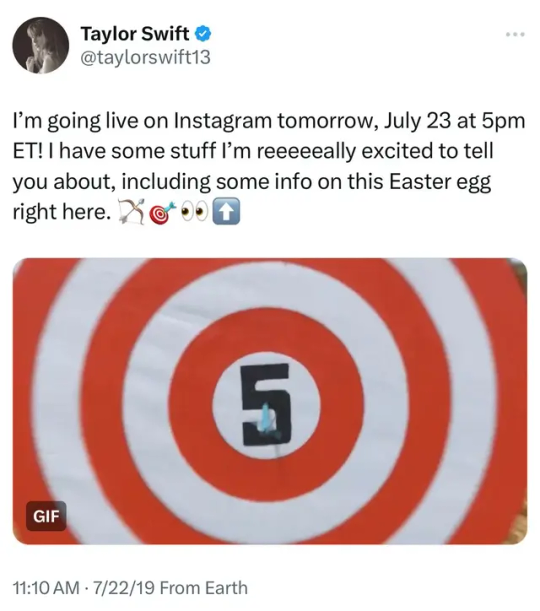
D — Dates and Declarations
In the 9th paragraph, the Vogue article notes that Lover was announced just after midnight on June 1st, the first day of Pride Month. The timing wasn’t accidental—and neither was the content. Taylor also released a letter to Senator Lamar Alexander, asking him to support the Equality Act, and posted a petition in support of LGBTQ+ civil rights. These weren’t vague gestures—they were coordinated acts of public political advocacy.
What makes this significant isn’t just that she said these things—it’s that she’d never said them this loudly before. Prior to Lover, Taylor had a documented history of quiet support: a donation to GLAAD in 2011, a pro-gay lyric in Welcome to New York, presenting Ruby Rose with an award, and even subtle visual nods like her lavender sweater in Mean. But none of that matched the scale, clarity, or political urgency of her 2019 actions.
Then there’s the author’s note that her letter was written on her personal stationery, which cheekily read: “Born in 1989. Loves cats.” If that’s the personal truth she’s putting on paper, her next sentence—“I personally reject the president’s stance”—reads differently. “Personally” doesn’t just signal belief; it signals lived experience. If she were writing from a purely ally perspective, wouldn’t it be easier to say “I support the rights of the LGBTQ+ community”? Instead, she positions the rejection as something that affects her directly.
This is part of what makes the “I recently realized I could advocate for a community I’m not a part of” statement so strange in the same interview. She’d already spent years advocating for queer people—what changed? Perhaps it’s not that she was finally advocating for LGBTQ+ people, but that she was finally speaking about trans rights, a specific subgroup she hadn’t addressed before. The specificity is important—because if she’s not part of the trans community, but is part of the LGB community, then the quote reads very differently than it’s often interpreted.

E — Enemies of Progress: Who Was YNTCD Really For?
In paragraph 10, Vogue lists the targets of You Need to Calm Down: trolls, cancel culture, homophobes, concert picketers, and those who pit successful women against each other.
But let’s pause—who was picketing Taylor’s concerts? Why were people already protesting her shows before YNTCD ever dropped?
Because her queer alignment didn’t start in 2019. For nearly a decade, she’d quietly supported queer causes, coded her music with queer subtext, and stood in solidarity behind the scenes. YNTCD wasn’t a beginning—it was a confirmation.
And it did more than call out hate. It placed her at the center of queer joy—as sheriff, no less. That imagery wasn’t subtle, and it challenged the idea that she was merely an ally.
The song also critiques how women are constantly scrutinized and compared—adding a deeper layer for someone who’s long had her personal relationships dissected under a heteronormative lens.
YNTCD made her stance unmistakable. Even if she didn’t spell it out.

F — Family Matters: “If He Was Gay, He’d Be Gay”
In paragraph 12, Swift shares a moment with close friend Todrick Hall. He asks, “What would you do if your son was gay?” Her response: “If my son was gay, he’d be gay. I don’t understand the question.”
It’s a powerful moment—especially in context.
They're sitting in a secret garden shaped like a cocoon—a space symbolizing transformation and protection. The metaphor is striking. Here’s Taylor, wrapped in this image of safety and potential change, confronted with the idea that someone close to her had doubts about where she stood.
Her realization? “I hadn’t been publicly clear enough.” But clear to whom?
Of all the marginalized communities Taylor could have highlighted, she centers the LGBTQ+ community. Not women. Not BIPOC fans. Not people with disabilities. This is who she’s focused on.
And her emotional reaction—“devastating”—isn’t just about perception. It reads as personal. If she were queer, this would be a moment of profound internal reckoning. Because being seen as an outsider to your own community is a unique kind of pain.
That’s why the answer hits different. “If he was gay, he’d be gay.” It carries the energy of someone who’s long wrestled with her own identity and doesn’t want that struggle projected onto others.
If she was gay, she'd be gay.
What’s the question?

G — Guarded in Conversation, Glowing in Song
The writer notes that Taylor’s answers on LGBTQ+ topics were “direct, not performative or scripted,” but also that she seemed tense—“like she’d enjoy [the interview] about as much as a root canal.” The exception? When the conversation turned to music. Suddenly, her “face lit up” and she began weaving melody into her speech. That’s where she’s most at home.
It begs the question: Is music the only place she feels free to speak her truth?
If her public language is burdened with risk—fear of missteps, media backlash, or violating a carefully crafted persona—then songwriting becomes her sanctuary. A protected space where she can communicate honestly, albeit in metaphor and code.
She seems guarded in speech, but in music?
She radiates.

H — Hints from the Heartland
The author of the Vogue piece acknowledges that Taylor had been sending pro-LGB signals for years—since at least 2011. And Gaylors know it goes even further back: in 2008, she was participating in anti-gay bullying PSAs and quietly supporting LGB causes long before it was deemed “safe” for someone like her to do so.
And that matters. Because she was a young country star from Nashville. We explored this in The Glass Closet post: country music has a long, fraught history with queerness. Chely Wright’s career was decimated the moment she came out in 2010. Taylor would’ve seen that play out in real time—and internalized the lesson.
So her early advocacy wasn’t just subtle. It was strategic. She laid groundwork in winks and whispers, not because she didn’t care—but because she knew the cost of being too loud, too soon.
I — In Plain Sight: A Timeline of Taylor’s Queer Advocacy
Long before Vogue 2019, Taylor Swift had already been participating in meaningful acts of queer advocacy—subtly, consistently, and often in ways that flew under the radar for casual fans. Here’s a quick timeline of what she had already done by the time this article was published:
2008 – Participated in a Seventeen magazine PSA against anti-gay bullying following the murder of Lawrence King, a 15-year-old shot for being gay.
2010 – Released Mean, widely interpreted as a song about homophobia and bullying. In the video, one character wears a lavender sweater—later referenced in the Vogue article.
2011 – Began to be more visibly supportive of queer artists and fans. Notable moments include her friendship with out lesbian musicians like Hayley Kiyoko (who later appears in her music video) and support for LGB charities behind the scenes.
2014 – Released Welcome to New York with the lyric: “You can want who you want / Boys and boys and girls and girls.” This marked one of her first overt queer-affirming lines in a song.
2016 – Publicly presented Ruby Rose (a genderfluid lesbian actress) with a GLAAD Media Award.
2017–2018 – Dedicated “Dress” on the Reputation tour to Loie Fuller, a queer icon and gender-defying performance artist.
2018 – Wrote a personal, viral Tumblr post ahead of the midterms calling out anti-LGB legislation and specifically criticizing Marsha Blackburn’s homophobic voting record. This was a major shift for a celebrity who had previously remained silent about elections.
2019 (pre-Vogue) – Donated generously to GLAAD and the Stonewall Inn Gives Back Initiative during Pride Month. She also began actively using her platform to uplift queer voices, and started the You Need to Calm Down campaign by launching a petition in support of the Equality Act. This is where the organization/policy she supported explicitly included gender identity in its mission or language and Taylor acknowledged this publicly.
These moments span more than a decade—and they are not subtle. Her engagement wasn’t a sudden pivot in 2019; it was a steady climb toward louder, more direct action.
Soon, we’ll return to the infamous “community I’m not a part of” quote that so many Swifties have latched onto. But before we get there, it’s worth recognizing: Taylor’s track record of queer advocacy was long established well before that moment.

J — Judgements and Justifications
In discussing the Tennessee Equality Act, Taylor says she “loved how smart it was to come at it from a religious perspective.” On the surface, this is a political observation—praising a tactic that reframes queer protections in a language conservative lawmakers might understand. But for a songwriter like Swift, who builds entire albums around thematic layers, this statement feels more personal. In The Tortured Poets Department, she references biblical imagery, heaven and hell, sin, redemption, punishment, and divine judgment. The emotional weight behind her lyrics—especially when dealing with shame, silence, and secrets—often echoes the internal conflict so many queer people experience growing up in religious households or communities.
Swift doesn’t just casually name-drop religious themes; she builds worlds out of them. To highlight the “smartness” of using religious justification in advocacy suggests a deeper awareness of how moral arguments are weaponized against queer people. It also implies she’s personally familiar with the pain those narratives can cause—and how powerful it can be to reclaim that language for liberation.

K — “Kicked Down by the Church” The release of “You Need to Calm Down” wasn’t just met with celebration—it triggered backlash, including from a Colorado pastor who declared Swift “a sinner in desperate need of a savior” and warned that “God will cut her down.” Beyond the absurdity of that rhetoric lies something much more serious: the reminder that queerness, or even perceived queerness, invites violent cultural policing. Some LGBTQ+ activists also questioned the suddenness of Taylor’s embrace of Pride imagery, critiquing her for corporate allyship or performative politics.
But if you’ve been paying attention—as the Vogue article subtly invites you to do—you’ll know none of this came out of nowhere. She had been quietly aligning with the queer community for years. And for a woman who had never been called a “sinner in need of saving” before, this moment was a turning point. If she received this kind of vitriol just for advocating, imagine the fallout if she openly identified as queer.
Maybe that’s why she dresses herself as the literal sheriff of a technicolor gay village in the “Calm Down” video. It’s a declaration of belonging disguised as allyship—plausible deniability in rhinestones and pastel wigs. Maybe this was her version of coming out. Or maybe it was a warning shot across the Bible Belt. Either way, the message was loud.
L — “Legacy or Liberation?”
Taylor has never been afraid to speak out—when it matters most to her. Whether pulling her music from Spotify, standing up to Apple Music, or fighting for artist ownership of her masters, she has repeatedly put her reputation on the line to challenge powerful institutions. In the Vogue interview, she explains her choice to let go of the past and focus on the future: “It was either investing in my past or other artists’ future, and I chose the future.” This quote, while referencing her business decisions, echoes another liberation she seems to be chasing—one that lives between the lines of her music and her imagery.
It’s not a stretch to read this through a queer lens. If Taylor has accepted the limits of the glass closet, she’s at least trying to leave the door cracked open for others. She’s built a career on coded confession, signaling over and over again to those who know how to listen. And still, she’s never named Gaylors as harmful or called for the conversation to stop—even while she’s called out just about everything else that’s hurt her.
People point to this article as the smoking gun of heterosexuality. But they fail to see the queerness that fills every page. If this is the definitive “she said she’s straight” moment… explain the rest of the article. Go on. We’ll wait.
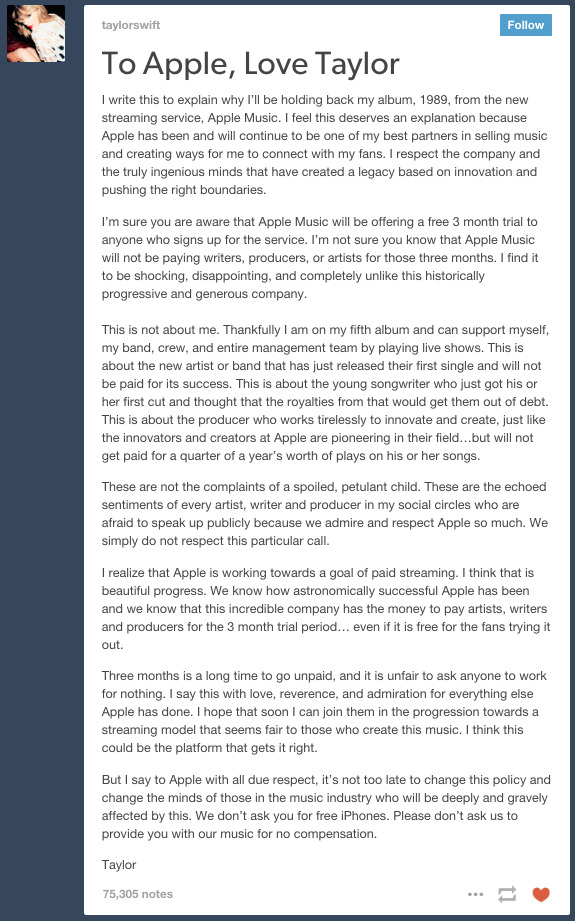
M — “Met Before the Moment”
Before we even reach the infamous quote Swifties love to use as proof that Taylor is straight, we’re grounded in a moment of bravery: her decision to take a stand in her sexual assault trial. The article recounts how she testified publicly, in open court, against the DJ who assaulted her—seeking only a symbolic $1 in damages. It’s a reminder of the way she’s used her platform to speak up, even when it’s uncomfortable or risky.
This moment of strength isn’t just about justice—it’s also about identity. It’s about taking back control of her own narrative, something Taylor has fought for time and time again. And that matters in the broader context of queerness too. The fear, vulnerability, and risk of being scrutinized, disbelieved, or minimized—it’s not the same, but it echoes the kind of high-stakes exposure that often accompanies coming out.
So when we talk about what Taylor says next, let’s not forget the emotional terrain she’s already laid. She knows what it means to be disempowered and to reclaim the story. And she knows the cost.

N — “Not a Part of the Community?”
Here it is—the quote that gets endlessly tossed around to “shut down” Gaylor:
“Rights are being stripped from basically everyone who isn’t a straight white cisgender male,” she says. “I didn’t realize until recently that I could advocate for a community that I’m not a part of. It’s hard to know how to do that without being so fearful of making a mistake that you just freeze. Because my mistakes are very loud. When I make a mistake, it echoes through the canyons of the world.”
At first glance, it seems like a straightforward disavowal. But let’s slow down and really examine it.
We’ve already established that Taylor has been advocating for LGB rights since at least 2008—from anti-gay bullying PSAs, to her GLAAD partnerships, to lyrics and symbols embedded across albums. So if she had always believed you shouldn’t speak on behalf of communities you don’t belong to… why was she advocating for queer rights all along?
The math only works if we understand that this quote is referring to her first time advocating publicly for the trans community—a specific identity group within the LGBTQ+ umbrella that she may not personally share.
Her activism in 2019—especially around the Equality Act and her statements on gender identity—was the first time she explicitly centered trans rights. So when she says she “didn’t realize” she could advocate for a community she’s “not a part of,” she may be drawing a careful line: she is part of the queer community. But trans rights advocacy, in that moment, was new territory. And for someone with her level of fame, she was terrified to get it wrong.
This reading not only makes sense—it’s supported by the timing, by her language, and by the long arc of her advocacy.
So no, this quote isn’t a denial. It’s a rare moment of vulnerability about the risks of public advocacy when you belong to some parts of a community, but not all. And for a woman who’s spent her career walking the tightrope of plausible deniability, this kind of carefully crafted phrasing is not a slip—it’s intentional.
If she believed she couldn’t advocate for people she didn’t identify with, then all her previous advocacy points to one conclusion: she does identify with the queer community. Just not every part of it.
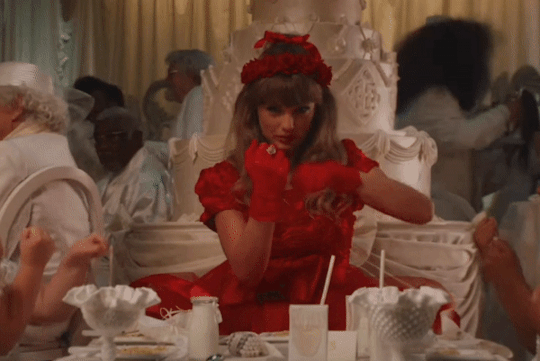
O — Omitted on Purpose: What We Choose to See
Let’s talk about timing.
On April 26, 2019, Taylor posted “ME! Out now” — the first single of the Lover era — and signed it off with hearts and rainbows. She posted it on Lesbian Visibility Day. A release date known to be significant in queer circles, posted in rainbow color palettes, launching her most colorful era yet. And that caption? “Out now.” It’s subtle. Or maybe it isn’t.
Then, she released Lover just after midnight on June 1st, the official start of Pride Month. These dates were not arbitrary. This is the same Taylor Swift whose fans currently believe she will announce Reputation (Taylor’s Version) on March 28 (3/28) because it mirrors her original Reputation announcement date of August 23 (8/23) — and that a ram mask worn upside-down in the "Karma" music video is somehow pointing to this through astrological symbolism related to Ram Day. Don’t get me wrong, I love the deep digging and cool connections just as much as anyone, but it’s the way that some things are totally acceptable to clown while others are outright rejected as nonsense.
Like… let’s pause. If that level of acrobatics is applauded and celebrated by fans, how is “Out now” on Lesbian Visibility Day somehow “a reach”?
It’s selective attention.
The fandom chooses to dismiss the simplest, most plausible clues when they point toward queerness — while simultaneously clowning for far more elaborate theories that conveniently uphold heteronormative narratives. The rainbow murals, bisexual wigs, LGBTQ+ symbolism, and carefully chosen dates from this era are too consistent to be random. And yet they're brushed off while a mirrored ram date theory spreads like wildfire.
When it comes to the Lover era, maybe the Easter eggs weren’t just hinting at a re-record or a new album drop. Maybe she was dropping something else entirely — and everyone missed it. Or worse, they chose to.

P — Perception Shift: From Girlhood to Glass Closet
In this section of the article, the interviewer shifts to a conversation about sexism, asking whether Taylor had always been aware of it. Her response is vulnerable, self-aware, and (importantly) layered. She reflects:
“When I was a teenager, I would hear people talk about sexism in the music industry, and I’d be like, I don’t see it. I don’t understand. Then I realized that was because I was a kid. Men in the industry saw me as a kid... The second I became a woman, in people’s perception, was when I started seeing it.”
This quote is essential not just for what it says about how women are treated in entertainment — but how it might also parallel her internal awakening, particularly as it relates to queerness.
When you're a kid — especially a girl — people write off your perspective. They infantilize you. You’re considered safe, nonthreatening, charming. And if you’re queer, but not yet perceived as someone who could pose a challenge to heteronormativity, your existence is easier for the world to digest. But the moment you step into adulthood, when your body is sexualized, your career becomes powerful, and your voice begins to matter… suddenly you’re “too much.” Suddenly, you’re dangerous. Sound familiar?
If Taylor entered the industry with any part of herself tucked away for safekeeping — a glass closet agreement, for example — then this realization about sexism might have dovetailed with a larger reckoning about her identity and autonomy. Not just who she was perceived to be, but what she was allowed to say, and who she was allowed to love.
That quote about songs like I Knew You Were Trouble and We Are Never Ever Getting Back Together marks a turning point in how the industry saw her — and maybe, how she saw herself. It's not hard to imagine that her emergence into “womanhood” in the public eye also came with the devastating realization that if she was ever going to live authentically, it would be on someone else’s terms.
This is why grace matters. If we allow Taylor room to grow in her awareness of sexism, why wouldn’t we offer the same space for her to process queerness — not just in others, but within herself? This paragraph plants the seed that not everything was visible to her when she was younger — but that doesn’t mean it wasn’t there. It just hadn’t yet been allowed to be seen.
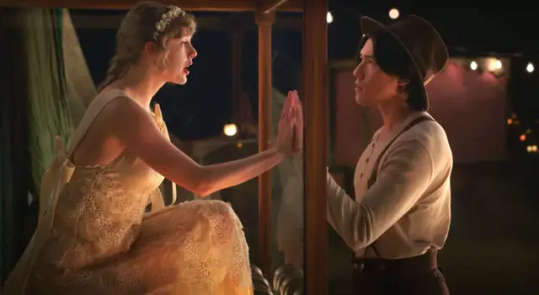
Q — Quiet as It’s Kept: The Art and Accusation of Her Songwriting
This paragraph may not scream “Gaylor” on first glance, but it offers one of the most quietly profound insights into Taylor’s artistry — and how it’s been misunderstood, minimized, and even weaponized against her.
She reflects:
“People would act like [songwriting] was a weapon I was using. Like a cheap dirty trick. Be careful, bro, she’ll write a song about you... First of all, that’s not how it works. Second of all, find me a time when they say that about a male artist...”
There’s something almost queer-coded in this experience: being punished for your method of expression, having your emotional honesty misread as manipulation, your perspective dismissed as dramatization. Taylor’s frustration here reveals just how deeply misunderstood she’s been — not just as a songwriter, but as a person who makes her private longings legible through art, only to have them distorted by the public eye.
What she creates is not a “cheap trick.” It’s a quiet art, a system of layered metaphors, symbols, personas, and lyricism — where truth lives just beneath the surface. Her music is often so personal it’s uncomfortable, but not because it overshares. On the contrary, it hides itself in plain sight. It’s legible to those who speak her language — and confounding to those who don’t.
The idea that her songs are “a weapon” implies that her truth, when unveiled, is dangerous. And maybe that’s exactly the point. If you are queer and closeted, your truth is dangerous — not because it’s shameful, but because it threatens the illusion that protects you.
Taylor isn’t just writing songs. She’s coding messages. She’s weaving grief into gowns and secrets into choruses, making it possible for a person to be understood without ever being exposed.
This quote might not name queerness directly. But it names the system that makes queer storytelling so difficult in the first place — and that alone makes it worth highlighting.

R — Rejection, Reputation, and the Refuge of Art
When the article shifts into the fallout from the Kimye scandal — Taylor’s cancellation, public exile, and retreat — we’re reminded just how brutal her relationship with the public has been. She describes the experience as catastrophic, a mass shaming that stripped her of her voice and agency. Her instinct? To make music. She says it was the only way to survive.
This coping mechanism is revealing. When the world misunderstands her, she writes. When she feels unsafe to speak, she sings. When she’s exiled, she creates a universe where she’s still in control.
It’s not hard to see the queer parallels here. Closeted people often use art to express what they can’t say aloud. When you’re queer and afraid — of rejection, judgment, or losing everything — your survival strategy becomes storytelling. You bury your truths in metaphor, hoping someone will notice. You write your way into safety.
Reputation was born out of trauma — but so were the following albums. Her entire discography is a roadmap of surviving silence. Her queerness, if present, lives in that pattern. It’s not just what she says — it’s what she has to say in order to keep going.
So when people demand a public declaration, they ignore the fact that Taylor has already given us something far more raw: her refusal to stop writing, even when the world tried to silence her. Her art is her resistance. Her survival. Her truth, coded and crystalline, waiting to be heard.

S — Silence, Stigma, and the 2016 Election
The article then turns to her silence during the 2016 election — a moment that defined how millions perceived her political stance. She explains that no matter what she said, she would’ve been torn apart. Damned if she did, damned if she didn’t. Her solution? Say nothing.
This feels like the exact bind she faces with her sexuality.
If Taylor were to come out explicitly, she risks alienating part of her fanbase, fueling media obsession, and potentially damaging the global brand she’s spent nearly two decades building. But staying silent also invites criticism — queerbaiting accusations, claims of vagueness, and doubts about her integrity.
It’s the trap many closeted people face, only magnified a million times under a global spotlight.
What’s interesting is that in the years following that election silence, she became louder about everything else — especially LGBTQ+ issues. Instead of retreating, she emerged with the Lover era: bright, bold, full of rainbows and carefully coded references. She may not have spoken in press conferences or interviews, but her art screamed louder than ever.
Taylor’s fear of saying the “wrong” thing isn’t weakness — it’s strategy. It’s survival. And it’s a strategy many closeted people know intimately. Because when your truth feels dangerous, silence becomes a kind of armor. And when you can’t say the words, sometimes a song — or an entire album — has to speak for you.

T — The Taylor Swift™ Bunker and the Burning of the Lover House
When Look What You Made Me Do dropped, much of the world misunderstood it. Critics dismissed it as petty or vengeful. But for Taylor, this was more than a clapback — it was a transformation. This was the moment she leaned into the idea of Taylor Swift™ — a constructed persona that allowed her to exist safely within the narrative, while taking control of it.
The Vogue article discusses how she built a house — a metaphorical one — to contain the many versions of herself. Each era a new room, a new reinvention. During Reputation, she built a bunker around that house. She didn’t give interviews. She retreated, but not passively — she did it with precision, choosing silence as a weapon and reinvention as her defense.
And now? We’ve watched the Lover House burn to the ground on the Eras Tour.
What does it mean to burn down the structure she’s been living inside?
Maybe the bunker — the shelter she created to weather public scrutiny, queer speculation, and personal betrayal — isn’t serving her anymore. Maybe this is a quiet rebellion, an acknowledgment that the narrative she once tried to control no longer needs protecting. She’s not hiding anymore — not in a tower, not behind metaphors, not in a rainbow-painted house. She’s setting fire to the architecture of plausible deniability, one spark at a time.
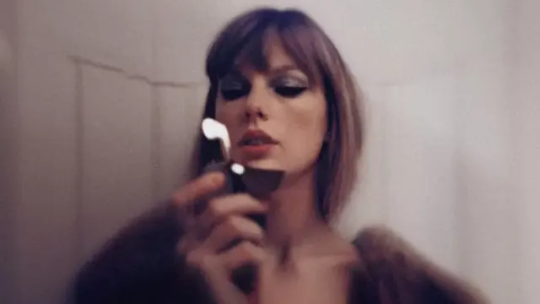
U — Underneath the Butterfly Wings
In the Vogue article, there’s a brief mention of the ME! butterfly mural in Nashville — a moment that signaled the beginning of the Lover era. But notably, the author doesn’t mention the actual date ME! was released: April 26th, aka Lesbian Visibility Day. That omission is important — because it’s exactly what plausible deniability looks like.
They do mention the intentionality behind other dates — Lover dropping at the start of Pride Month, YNTCD on Trump’s birthday — yet the most obviously coded date goes unspoken. It’s not an accident. It’s an invitation. (This makes me think about the three polaroids...)
The butterfly itself is a rich, poetic motif. A symbol of transformation, of rebirth, of self-expression emerging after a period of concealment. For Taylor, it’s a perfect metaphor — not just for the era, but for her own evolution. And painting it as wings on a wall? An invitation to stand in the middle. To imagine yourself inside the transformation.
You don’t have to decode it all. You just have to be willing to look.
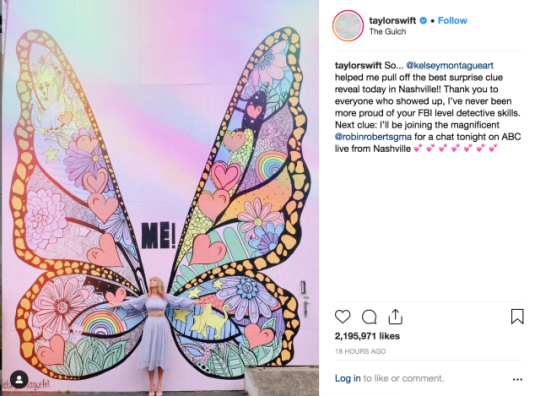
V — Vanishing Act (feat. Joe Alwyn) (kinda)
For an album that many claim is all about Taylor’s great love with Joe Alwyn… it’s kind of hilarious how absent he is from the actual Vogue feature. He’s mentioned once. In parentheses. By the narrator. Not by Taylor.
No sweeping anecdotes. No “he changed everything” soliloquy. No quotes from Taylor about their relationship. Just… blink and you’ll miss it energy.
The Lover era was supposedly Taylor’s most outward celebration of straight romantic joy — and yet the guy at the center of that narrative is completely offstage in her biggest pre-release interview? Not even a carefully scripted nod to “my amazing boyfriend who inspired this album”?
Privacy is one thing. But this? This feels like a deliberate vanishing act. Wonder why.

W — Wordless, Yet Wildly Loud
When Taylor calls Lover “a love letter to love,” it’s easy to gloss over how many shades of love that encompasses. Maddening, passionate, exciting, enchanting, horrific, tragic, wonderful… That’s not the language of a blissfully simple straight romance. That’s the language of a person who’s lived through love as survival, as loss, as transformation. It’s the language of someone who has loved deeply, maybe even when forbidden.
She describes feeling at peace after the grief of the Reputation era—an era where she famously stayed silent, building a “bunker” around herself. But silence doesn’t mean absence. It means strategy. The shell of Reputation may have been hard-edged, but inside? She was hatching something delicate and deliberate.
By the time Lover bloomed, Taylor wasn’t just reemerging. She was writing in full technicolor. And yet… still not saying it outright. This is the magic of her authorship: speaking loudly through subtext, through metaphor, through music. The story was never gone. It was just written in a language only some were listening for.
youtube
X — X-Ray Vision: Seeing Through “The Man”
When Taylor introduces The Man as a “thought experiment,” it’s easy to read it as a feminist anthem—and it is. But it’s also something more queer, more layered. The bridge is what really breaks the binary: “What’s it like to brag about raking in dollars and getting bitches and models…” This isn’t just about misogyny. It’s about power, performance, perception—and maybe projection.
What if she’s not imagining herself as a man, but imagining what it would feel like to live her actual life openly, if she were afforded the protection of maleness? The success, the swagger, the dating history, the freedom to be sexual, powerful, and unapologetic. So when she flips the mirror—“They paint me out to be bad / So it’s okay that I’m mad”—you realize she’s not just mad about double standards. She’s mad about what she could never say out loud.
If she were “the man,” maybe the things she’s done—raking in dollars, chasing models, reclaiming power—wouldn’t have to live under so much scrutiny. Or metaphor. Or plausible deniability.

Y — Yearning for Recognition: Loie Fuller and the Queer Artistic Lineage
When Vogue’s writer suggests that Loie Fuller may be the “most illuminating clue” to decoding both Reputation and Lover, it’s not just an offhand observation—it’s a revelation. Fuller, a queer icon of performance and illusion, was known for using light, shadow, and fabric to transform her body into living poetry. Her dances were about metamorphosis, concealment, emergence. Sound familiar?
Taylor honored Fuller on the Reputation tour Jumbotron and carried her motifs—serpents and butterflies—through to Lover, making it crystal clear that this reference wasn’t just about artistic ownership. It was about transformation and identity. About queerness.
Loie Fuller was a master of the “hide-and-seek illusionist game.” She dazzled and disappeared in the same moment. And what has Taylor done, if not mastered that same art? She's evoked symbols, created personas, coded her stories in velvet-lined metaphors—and paid tribute to queer artists along the way, often without her fandom realizing the depth of the gesture.
So why don’t more Swifties connect the dots? Why don’t they learn from the artists she literally projects on screens during her shows? Maybe because to do so would require acknowledging a legacy they’ve never been taught to look for. But Taylor is trying. She’s leaving us a syllabus. And Loie Fuller? She’s chapter one.

Z — Zooming Out: The Dollhouse, the Lover, and the Open Ending
As the Vogue article closes, Taylor delivers one of its most chillingly vivid metaphors: superstardom, she says, is like living in a dollhouse—a glass box where anyone can "ship you with who they want," decide who your friends are, and track your every move. The phrasing is razor-sharp, almost too articulate to be off the cuff, and it perfectly encapsulates the trap of fame. But in the context of everything else this article has covered—rainbows, butterflies, secret gardens, queerness, plausible deniability—it takes on another dimension entirely.
When she calls herself a baby doll in “ME!” and promises you’ll never find another like her, we’re reminded of that same dollhouse. A curated, polished version of herself, smiling behind glass. And yet, the lyrics wink at the queerness of desire: “You can want who you want / boys and boys and girls and girls.” She sings that line in Welcome to New York, but she lives it in the margins of her work—always teasing, always performing, always keeping the truest version of herself just out of reach.
This final image—of a woman fully aware she’s being watched, packaged, and dissected—feels like a deliberate warning shot. It's not a confession. It’s a dare. And now that the Lover house has burned down, the question remains: What was she trying to escape from? And what—if anything—is she finally ready to reveal?
That’s the question the article leaves us with. And it’s the question we’re still asking.

Conclusion: The ABCs of Plausible Deniability
When I first sat down to comb through Taylor Swift’s 2019 Vogue interview, I did what Taylor has taught me to do—I grabbed a highlighter. And as I read, I found 26 moments that stood out, 26 points that deserved more attention, 26 reasons why this article is far richer than the one sentence people love to cherry-pick as their “gotcha” against queer interpretations of her work.
So I took a page out of Taylor’s book. Hey kids, spelling is fun! And suddenly, the A-Z structure felt like the perfect way to break this all down. Because if there’s anything I’ve learned from Taylor, it’s that details matter, words are chosen with precision, and if you take the time to look closely, there is always more to the story.
The 2019 Vogue interview is not a smoking gun that “shuts down” Gaylor. It is a dense, layered, and coded piece of work that mirrors the way Taylor has always built her narrative—through plausible deniability, careful omissions, and a delicate balance of what is said and unsaid. This article deserves so much more consideration than one sentence that gets wielded against queer readings while everything else—from the trans advocacy, to the Loie Fuller references, to the calculated dates, to the butterfly and cocoon metaphors—is ignored.
Taylor Swift doesn’t do anything by accident. Not in her lyrics, not in her Easter eggs, not in her carefully crafted public image. So why would she accidentally load an entire profile with queer subtext, nods to hidden figures, and a narrative about metamorphosis and liberation?

I’ll leave you with this: at the end of the Speak Now prologue, Taylor signs off with a little smirk—“P.S. To all the boys who inspired this album, you should’ve known ;)”
And after reading this article as closely as I have, all I can say is: P.S. To anyone who thinks this interview ends the conversation… you should’ve known. ;)
#gaylor#kaylor#lgbetty#taylor swift#friend of dorothea#swiftgron#friends of dorothy#vogue magazine#taylor swift lover#taylor swift lyrics#deep dive#lover#reputation#midnights#yntcd#ME!#Youtube
34 notes
·
View notes
Text

The Daur (also spelled Dahur or Dagur; Chinese: 达斡尔族, Pinyin: Dáwò’ěr zú) are a Mongolic ethnic group native primarily to northeastern China, with a small population in Mongolia. They are officially recognized as one of the 56 ethnic groups of China. The Daurs are known for their rich cultural heritage, historical continuity, distinct language, and syncretic traditions that have integrated elements from various neighboring peoples while maintaining a strong sense of identity.
The Daur trace their ethnogenesis to the Khitan people, a proto-Mongolic group that founded the Liao Dynasty (907–1125 CE) in northern China and parts of Mongolia. Linguistic and historical evidence strongly supports the theory that the Daurs are descended from the Khitans, particularly those who remained behind after the collapse of the Liao state and were later absorbed into the Jin and Yuan Dynasties. This lineage is evidenced by linguistic connections and recorded population movements. Some Khitans moved northwestward and formed the Qara Khitai (Western Liao), while others remained in the northeast and gave rise to the Daur.
The name “Daur” likely stems from the Khitan word Daur, meaning "iron" or "strong," though the exact etymology remains debated among scholars. Their ethnonym was recorded by early Manchu sources, notably during the 17th-century expansion of the Qing Empire, in which the Daur played a significant role.

Today, most Daurs reside in Inner Mongolia, particularly in the Morin Dawa Daur Autonomous Banner (莫力达瓦达斡尔族自治旗) in the Hulunbuir region. Other significant populations are found in Heilongjiang and Xinjiang provinces of China. A smaller community resides in the Hovd province of western Mongolia, largely descendants of groups displaced during historical military campaigns.
Historically, the Daur lived along the middle Amur River (now mostly in Russian territory), but many were resettled by the Qing during the 17th century to serve as a buffer against Russian encroachment. These forced migrations played a role in shaping modern Daur distribution.
The Daur language is a member of the Mongolic language family, though it occupies a unique position within it. While it shares certain lexical and grammatical traits with other Mongolic languages, Daur is not mutually intelligible with Mongolian proper. It features significant archaisms and retains elements not found in other Mongolic tongues, making it of great interest to linguists.
Daur is divided into three main dialects: the Butha, Hulunbuir, and Qiqihar dialects, named after their respective geographic regions. The language incorporates numerous loanwords from Chinese, Manchu, Evenki, and Russian, reflecting the Daur's long history of interethnic contact. Daur has traditionally been a spoken language with no indigenous script, but it has been written in both Latin and Cyrillic scripts in different contexts. In modern China, Daur is sometimes transcribed using the Latin alphabet for linguistic documentation, though Chinese (Mandarin) remains the dominant written and administrative language.
Despite its historical importance, Daur is currently considered endangered, with most younger speakers shifting to Mandarin Chinese. Efforts to preserve and revitalize the language are ongoing but face significant challenges due to urbanization, intermarriage, and educational policies.

According to the most recent Chinese census data (2020), there are approximately 132,000 Daurs in China. The number of Daurs in Mongolia is significantly smaller, estimated to be only a few hundred individuals. The majority live in rural areas, though increasing urban migration has led to growing Daur communities in cities such as Qiqihar and Hailar.
The Daur population is relatively stable, with modest growth rates. They have a balanced gender distribution and relatively high rates of bilingualism in Mandarin Chinese. Education levels have risen substantially over recent decades, contributing to the erosion of traditional practices among the younger generation.
Historically, the Daurs practiced a mixed subsistence economy of agriculture, pastoralism, fishing, and hunting. They were particularly skilled in horse breeding, and their cavalry played an important role in regional conflicts, especially during the Qing dynasty.
Agriculture was centered on millet, barley, and later corn and wheat after these crops were introduced. Animal husbandry included cattle, horses, sheep, and pigs. In riverine areas, particularly near the Nen and Nonni rivers, fishing formed a significant part of the local diet. Daur hunters used bows and flintlock rifles, and they trapped sables, foxes, and other fur-bearing animals for trade.
In modern times, most Daurs engage in agriculture and light industry. However, traditional economic practices persist in some rural areas, particularly horsemanship, which remains a cultural touchstone.

Daur culture is rich and multifaceted, reflecting a synthesis of Mongolic, Manchu, and Han Chinese influences. Despite centuries of interaction with other groups, the Daurs have preserved distinct cultural elements.
Traditional Daur dress closely resembles Manchu-style robes, with long tunics, wide sleeves, and horse-riding boots. Women's attire traditionally includes embroidered dresses and elaborate headdresses. Today, traditional garments are worn mostly during festivals and ceremonies.

Daur musical traditions include the use of the morin khuur (horsehead fiddle), flutes, and drums. Songs often focus on themes of heroism, nature, and courtship. Traditional dances feature vigorous, rhythmic movements and are performed during major festivals and community events.
Historically, the Daurs practiced shamanism, with shamans serving as intermediaries between humans and the spirit world. They conducted rituals to cure illness, predict the future, and ensure community well-being. Shamanic practices are still observed in some regions, though they have declined significantly.
In addition to shamanism, the Daurs historically practiced Tibetan Buddhism to a limited degree, especially during the Qing period, when Lamaist influence spread across Inner Asia. Ancestral worship and animistic beliefs remain embedded in Daur spirituality, particularly reverence for nature spirits and animal totems.
Under modern Chinese governance, most Daurs are formally atheist or practice a form of syncretic spirituality that blends shamanic and Buddhist elements with secularism.

The most prominent Daur festival is the Nadam Festival, which is shared with Mongolic peoples. It features traditional sports such as wrestling, horse racing, and archery. Other festivals include lunar New Year celebrations and seasonal agricultural rites. During festivals, Daur people wear traditional clothing, perform folk music, and prepare ceremonial foods.
Traditional Daur society followed a patrilineal clan structure, with exogamous clans (known as hala) that regulated marriage patterns. Marriages were arranged and involved elaborate ceremonies including bride price negotiations, communal feasting, and symbolic rituals.
Although arranged marriages are now rare, clan identity remains culturally important. Intermarriage with other ethnic groups, particularly Han Chinese and Mongols, has increased in recent decades, contributing to linguistic and cultural assimilation.

The Daur played a strategic role in the military administration of the Qing Empire, especially under the Eight Banners system. Many Daur men served as soldiers in the Qing imperial army and helped to defend and expand the empire’s northeastern frontier. In recognition of their loyalty, the Qing granted them lands and special privileges, which helped maintain Daur ethnic cohesion.
In the 20th century, the Daur community experienced upheaval during the Japanese occupation of Manchuria (1931–1945) and subsequent civil conflict in China. After the founding of the People's Republic of China, the Daur were granted autonomy in certain regions and given minority protections under state law.
Efforts to preserve the Daur language have included documentation by linguists and government-sponsored cultural initiatives. However, the dominance of Mandarin in education and media has led to significant language shift. In some areas, Daur language instruction is offered at the primary level, but few schools provide secondary education in the language.
The Daur have benefited from affirmative action policies in education and employment that support ethnic minorities in China. These include bonus points on university entrance exams and recruitment into civil service roles.

Genetic studies indicate that the Daur possess a unique genetic profile that reflects their historical position as an intermediary group between Tungusic, Mongolic, and Altaic populations. They show a high frequency of Y-chromosome haplogroup C3, associated with Mongolic and Siberian ancestry, as well as mitochondrial DNA haplogroups common in East Asia.
Anthropologically, the Daur exhibit physical characteristics typical of northeast Asian populations, including epicanthic folds, straight black hair, and broad facial features.
#daur#daur people#ethnic groups#mongolic peoples#inner mongolia#indigenous peoples#cultural heritage#endangered languages#ethnography#anthropology#asian history#chinese ethnic groups#minority cultures#altaic languages#mongolic languages#traditional clothing#shamanism#tibetan buddhism#ethnic aesthetics#folk traditions#nomadic cultures#cultural preservation#historiography#asian studies#cultural anthropology#historical identity#ethnic diversity#heritage matters#language revitalization#forgotten histories
14 notes
·
View notes
Text
March Week 1 - Symbolism and Traditions
Okay, now that we've got all the generalized types of magic out of the way, let's take a look at some other topics that will help us fill in the gaps in things. We'll be looking at symbols, traditions both personal and ancestral, spell and ritual design and much more! Let's buckle up and get to it!
Monday - Alphabets and Runes
Research - Look up different alphabets that have been used in magical traditions. Anything from the Elder Futhark Rune language, to the Ogham Script, to any other form of writing that has been used in any tradition. Do you know another language? Have you ever made your own alphabet or cipher? There are some grimoires that are written in an entire code that only the person who wrote it understood! If you feel like doing so, you can do the same! Look up an alphabet of any kind and write out a translation of those into the alphabet you know. For fun, write out at least one page in that other alphabet!
Research/ New Page - Runes - Is there a rune set you already know? Elder Futhark? Ogham? Another rune set? Have you ever made your own runes? Define rune. What is a rune? What makes something a rune? In both the magical and mundane sense, what are they? If you find a type of runes that you wish to learn, do so! Make a list of the runes themselves, then write out the meaning and symbology of each one!
Practical - Make a set of the runes you research or are already familiar with! Use what you have on hand! It could be as simple as strips of cardstock with the runes on them, notecards with the rune on one side and description on the other, or feel free to find a set online or in a store! You can even go outside and just find some stones and use a sharpie to write the runes on them!
Divination/ Journal - if you perform divinations, use your new runes to do so! And journal about the experience!
Tuesday - Languages
Research/ New Page - Is there a language that you don't speak or that no one really speaks, like Latin, and look into the basis of that language. Where does it come from? What is the language's base? Are there different dialects? Find an accurate translator and look up the words for some of your magical terminology. Make a list of those words to use in spells, incantations and prayers later on. Now, take it a step further. What is your ancestry? What languages has your family spoken in the past? Ask your parents, grandparents and other relatives if they still speak it at all. Get a little family history lesson. Having this connection to your lineage and ancestry can help you better understand a lot about yourself, your family, and traditions you may not realize you are practicing or performing regularly!
New Page - along with the list of words and languages, keep a page with the basic info you discover about your ancestry and family history! It could come in handy for a multitude of things, both pertaining to this challenge and life in general! This page could include traditions, recipes, where you come from, splits in the family, and general family history.
New Page - Pick another herb from your list and research it! Magical, mundane, medicinal, associations, myths and legends, how to grow and propagate it, where it comes from and its history!
Wednesday - Other Symbols
Research - What are some other common symbols that are commonplace within witchcraft circles? What are they, what do they represent? What are they used for? Do you use any of them without meaning to? What is their history? Where do they come from? Think about things commonly associated with withcraft. Cauldrons, brooms, pointy hats, black cats... why are these things associated with witchcraft? Don't just go with the first thing you find when you look this up, dig deep, do research. Are there multiple sources that confirm these things?
Personal/ Introspection - What things do you associate with witchcraft and why? It can be anything from tools you're using, to symbols, to specific herbs and gems or grander things/ ideas like the moon or certain practices.
Research/ New Page - Pick another gemstone or other item you want to research the witchy/ magical uses of and get at it!
Thursday - Traditions
Research/ New Page - Think about the conversations and research you did into your family lineage and language. Carry on with that research and look into the traditions your family has. Everything from when they gather together for things and why, to the recipes they make, to the way they pray or worship, to how they do things in general. Are there any beliefs your family has that have been passed down to you about things like luck? Or love? What wisdom has been passed down to you by your family?
Journal/ Introspection - Do you have any traditions that you practice on your own? Think about the things you celebrate and why, as well as when you celebrate them. Are there certain ways you do things? Everything from cooking to cleaning, to more spiritual practices! Feel free to make a page dedicated to your personal traditions. Recording them can help you to change and grow them over time, or even just to pass them along to your own family!
Friday - Catch Up Day
Today is a catch up day. We've had a lot of information and research prompts thrown at us the last three months, so take today to look back at any of the prompts you have missed or one you want to continue working on!
Alright! There's March week 1 everyone! Good luck and happy crafting witches!
-Mod Hazel
#2024 grimoire challenge#grimoire challenge#grimoire#paganism#witchcraft#witchblr#2024 gc#book of shadows#dark academia#occultism#2024 grimoire challenge march#march week 1#2024 gc march week 1#grimoire challenge blog#grimoire prompts#grimspiration#witchcraft 101#witchy stuff#witchy inspiration
70 notes
·
View notes
Text
The idea that Gentiles (non-Jews) are spiritually linked to a lower or different heritage, especially in the context of Lilith and Samael, is a complex and controversial topic within Jewish mysticism, particularly within the occult and Kabbalistic traditions. While such ideas are often not found in mainstream or rabbinic Judaism, they do emerge in esoteric, Kabbalistic, and mystical texts, particularly those influenced by the medieval Kabbalistic tradition and later Sabbatean and Hasidic mystics. Below, I will explore the connections between Lilith, Samael, and the spiritual heritage of Gentiles in Jewish occultism, with reference to key sources.
1. Lilith and Samael in Kabbalistic Thought
Lilith and Samael are often portrayed as demonic or shadow figures in Kabbalistic cosmology, and their roles in spiritual impurity and chaos are central to the Qliphothic realm — the dark opposite of the Sefirot (the divine emanations of God).
Lilith is often associated with chaos, carnality, and the dark feminine. She is said to be the first wife of Adam, before Chavah (Eve), and is typically viewed as a rebellious figure who refused to submit to Adam and consequently became a demonic being. This myth has roots in the Alphabet of Ben Sira and has been expanded in later mystical texts, such as the Zohar.
Samael, on the other hand, is frequently depicted as Lilith's partner in the Qliphoth, and as the angel of death or a satanic figure. Samael’s relationship with Lilith is often seen as one of temptation, destruction, and perversion of creation, and he is sometimes considered the spiritual ruler of the Gentiles, representing spiritual impurity and the fallen world.
In this framework, Gentiles are sometimes portrayed as spiritually linked to these demonic forces because they do not partake in the holy covenant that is specific to Israel. The covenant of Abraham is often seen in Kabbalistic thought as a divine shield that separates the Jewish people from these demonic or impure influences, which are viewed as more accessible to Gentiles.
Source:
Zohar: In the Zohar, Lilith is associated with spiritual impurity and is portrayed as an obstacle to the divine light. This impure nature is often linked to the Gentiles, who are believed to be more susceptible to Lilith’s influence due to their lack of the sacred lineage of Israel.
In Zohar (1:19b), Lilith is associated with the "darkness" of the world, a power that resides outside the holy realm of Israel.
2. Sabbatean Influence and the Spiritual Heritage of Gentiles
The Sabbateans, a messianic movement that arose around Shabbatai Zevi in the 17th century, had complex and often heterodox interpretations of Jewish mysticism. The Sabbateans were known for their anti-authoritarian tendencies and for reinterpreting Jewish law and tradition in ways that challenged established rabbinic interpretations.
Lilith and Samael became prominent in Sabbatean thought as figures of rebellion. Shabbatai Zevi himself was considered a messiah figure, but his followers sometimes viewed Lilith and Samael not only as forces of evil but as transgressive energies that could lead to divine transformation.
In Sabbatean cosmology, the Sefirot and the Qliphoth (the dark side) were sometimes seen as interwoven or in flux, meaning that those on the fringes of the sacred community — like Gentiles — might be closer to the Qliphoth but could still play a role in the ultimate redemption through cosmic reversal.
Sources:
The Sabbatean Movement and Jewish Mysticism by Moshe Idel: This text examines how Sabbatean ideas reshaped Jewish mysticism and incorporated figures like Lilith and Samael into cosmologies of rebellion and transformation.
The Mystic Quest by Arthur Green: Green’s works explore the relationships between Jewish mysticism, Sabbateanism, and the symbolism of impure forces in relation to non-Jews.
3. Gentiles and Their Spiritual Purity
In many Kabbalistic and Jewish occult traditions, the spiritual purity of Gentiles is sometimes viewed as inferior to that of the chosen people of Israel. This is not always a literal statement, but a mystical and symbolic one that has roots in both Talmudic and Kabbalistic thought.
Kabbalistic concepts of purity often frame the Jewish people as the vessel for divine light, with Gentiles viewed as being more closely tied to the forces of darkness — represented by Lilith and Samael — due to their lack of divine covenant.
The Qliphoth (the dark side) is often seen as the realm of Gentiles, while the Sephirot is the domain of Israel. This notion could also tie into ideas that Gentiles are more prone to be influenced by Lilith, Samael, and the Qliphoth, given their exclusion from the holy lineage.
Source:
The Tree of Life: Kabbalistic Teachings by Israel Regardie: Regardie explores the symbolism of the Sephirot and the Qliphoth, discussing the spiritual divide between those who are initiated into the divine covenant (Israel) and those who are not (Gentiles), and the influence of Lilith and Samael.
4. Modern Esoteric Interpretations
In modern occult and esoteric Jewish thought, the Lilith-Samael narrative has evolved, and figures like Lilith are seen less as merely demonic and more as agents of transformation. Some modern Kabbalistic and Gnostic systems have reclaimed Lilith as a figure of empowerment, transcending traditional roles of impurity and rebellion. However, these interpretations often retain the idea that the Jewish people are spiritually distinct or chosen, while Gentiles are more susceptible to the darker forces of Lilith and Samael due to their lack of spiritual protection.
Conclusion:
While mainstream Jewish thought does not present Gentiles as being of a different or lower spiritual heritage per se, Jewish occultism, especially within Kabbalah, Sabbateanism, and some esoteric systems, has explored the spiritual roles of Gentiles in relation to Lilith and Samael. These figures are sometimes seen as part of a spiritual hierarchy in which Gentiles are more susceptible to the Qliphothic forces due to their perceived lack of covenant. However, these views are more metaphorical and symbolic than literal, and they often reflect the complex mystical systems within Jewish mysticism that address the dynamics of purity, rebellion, and spiritual ascent.
2 notes
·
View notes
Text
Alphabet Legacy Challenge.
There are other alphabet legacy challenges out there, I’m just adding to it 🤷🏾♀️
Founder’s name has to start with the letter A of course.
The founder has one child and that child has to have a B name which is the first heir (example: If your founder’s name is Alissa… then Alissa’s heir is Brianna… then Brianna’s heir would be named Catalina… so on and so forth until you get to the letter Z)
The founder has to have ONE child, but if at any point after that, if more than one child is born, every child has to have a name that starts with that letter (example: if Alissa’s daughter/the first heir Brianna has twins or triplets or she gets pregnant more than once, then each child has to have a name that starts with the letter C like Catalina, Cindy, and Cynthia).
Now the easy way to complete this challenge would be to just have each heir have a child starting with each letter of the alphabet… NOPE!
Your founder must complete one of three aspirations and have the following traits.
Founder Aspiration (choose one)
Big Happy Family
Super Parent
Successful Lineage
Founder Traits
Ambitious
Neat
Family Oriented
If you have one of those mods that give you more traits.
Outgoing
Generous (only if you have For Rent EP)
After that use this Random Trait Generator for their traits and aspirations. (It’s okay if you skip the infant and toddler stages, because I do 🫣) With each heir having only one child, this shouldn’t be too hard.
Each child must be at least a 3 in every child skill and be an A student before aging up into a teen.
Each teen must have teen job, have a 5 in the skills of your choosing and be an A student before aging up into a Young Adult.
After aging into a young adult, the heir must move out and the previous gen must be switched to unplayed. (example: once you’ve completed Brianna’s gen, Brianna must move out so that she can start Catalina’s gen, leaving the founder unplayed, once Catalina’s gen is complete, she then moves out, leaving Brianna’s gen unplayed… so on and so forth.)
Cheats are allowed using MC Command Center and UI Cheats (specifically to keep their hunger, sleep, and bladder under control).
Other mods are optional but if they’ve been updated feel free to utilize them.
HAVE FUN! 😉
11 notes
·
View notes
Text
Exploring Divination in Spirituality: A Guide to Self-Development and Connection
In the vast tapestry of spirituality, divination practices have long served as threads connecting individuals to the realms beyond the seen. From ancient traditions to contemporary spirituality, various divination methods offer insights, guidance, and pathways for self-development and connection. In this blog, we will explore different divination practices and discuss how to best utilize them for personal growth and forging connections with the spiritual realm.
Divination is the ancient art of seeking insights or guidance through symbolic means. It operates on the principle that the universe communicates with individuals through symbols, signs, and archetypes. Here are some popular divination methods:
Tarot Cards: Tarot cards are a powerful tool for self-reflection and divination. Each card carries rich symbolism, offering insights into different aspects of life. Utilize tarot for self-development by drawing daily cards and contemplating their meanings in relation to your experiences.
Runes: The runic alphabet, known as the Futhark, is often used for divination. Each rune symbolizes a concept or energy. For self-development, draw a rune daily and reflect on its relevance to your current journey.
Astrology: Astrology explores the correlation between celestial bodies and human experiences. Your birth chart, or horoscope, can provide insights into your personality, strengths, and challenges. Regularly check your horoscope for guidance on personal growth.
Numerology: Numerology involves analyzing the significance of numbers in your life. Your birthdate and name are assigned numerical values, revealing aspects of your personality and life path. Understanding your numerology can guide you in making informed decisions.
Crystal Ball Gazing (Scrying): Scrying involves gazing into a crystal ball or other reflective surfaces to access intuitive insights. Develop a scrying practice by meditating with a crystal ball, focusing on questions, and allowing images or impressions to come forth.
Utilizing Divination for Self-Development:
Set Intentions: Before engaging in divination, set clear intentions. Whether seeking insights into personal challenges, guidance for the future, or a deeper understanding of yourself, clarifying your purpose enhances the effectiveness of the practice.
Regular Practice: Consistency is key. Establish a regular divination practice, whether it's daily, weekly, or monthly. The more you engage with divination, the more attuned you become to the symbols and messages presented.
Reflect and Journal: After a divination session, take time to reflect on the insights received. Journaling about your experiences can deepen your understanding and provide a record of your personal growth journey.
Combine Modalities: Experiment with combining different divination modalities. For example, draw a tarot card and interpret it in conjunction with a crystal that resonates with its energy. Integrating multiple methods can offer a more comprehensive perspective.
Trust Your Intuition: While divination systems provide frameworks, trust your intuition in interpreting the messages. Your inner wisdom plays a crucial role in deciphering the symbolism and applying it to your unique circumstances.
Fostering Connections through Divination:
Spiritual Guidance: Use divination as a tool to connect with spiritual guides, angels, or higher selves. Seek guidance on your spiritual journey and inquire about steps to enhance your connection with the divine.
Communication with Ancestors: Certain divination practices, such as ancestor divination or ancestral altars, facilitate communication with ancestors. Honor your lineage and seek their wisdom for support and guidance.
Manifestation and Law of Attraction: Divination can be a powerful tool for manifestation. Use divination to align your energies with your goals, identify potential obstacles, and gain insights into the actions needed for successful manifestation.
Energetic Clearing: Divination practices can reveal energetic imbalances or blockages. Use the insights gained to focus on energetic clearing through meditation, energy healing, or rituals that promote balance and harmony.
In the vast landscape of spirituality, divination serves as a dynamic gateway to self-development and connection with the spiritual realm. As you explore different divination practices, remember that each method is a unique lens through which you can gain insights, foster personal growth, and forge meaningful connections with the unseen. Embrace the journey of self-discovery and spiritual exploration, and let the symbolic language of divination be your guide.
0 notes
Text
My B Generation for my Moderns hatched and

I LOVE the gradient on him. Hes got LAPIS for a TERT. I'm keeping him. Elderich/Rust/Lapis
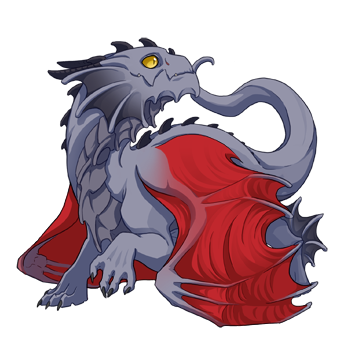
the other one is triple basic, but I dont hate their colors either. Smoke/Red/Iris. Both of them have decent colors even if they're not
I'm off to go find a Modern Dragon with a B Name! If anyone is interested in my Spare hatchlings DM me either on Tumblr or on FR I'm willing to part with many of the spares.
0 notes
Text
The Sims 4 Alphabet Challenge UPDATED !!!
The Alphabet Challenge (My version)
Founder Rules
Choose any premade sim in the save.
The sim must be a young adult. If they aren’t then you may use cheats to reset their age at Young Adult.
You can give them a makeover.
They can be single sims. For example, Johnny Zest
They can be sims already married. For example, Bob and Eliza Pancakes.
They cannot have children. If you really want to use that specific household though then you can delete the kids.
You can keep them in the house they are currently in, or you can use free real estate cheat to get into their first house.
Career: Freelance Crafter
Aspiration: Creativity-Master Maker
Gameplay Rules
Founder’s childrens name should start with the Letter A.
The youngest child becomes the heir.
Each generation’s kids name start with the next letter of the alphabet. For example, A Heir will have B children and B Heir will have C children.
Each generation has two different career options and aspirations to go with them. When you reach the end at letter Z, you can start over with A and do the careers you didn’t pick.
Letter A
Career: Actor/Actress
Aspiration: Creativity-Master Actor/Actress
Career: Education/Administrator Branch
Aspiration: Popularity-Friend of the World
Letter B
Career: Athlete/Bodybuilder Branch
Aspiration: Athletic-Bodybuilder
Career: Criminal/Boss Branch
Aspiration: Deviance-Public Enemy
Letter C
Career: Culinary/Chef Branch
Aspiration: Food-Master Chef
Career: Civil Designer/Civic Planner Branch
Aspiration: Nature- Eco Innovator
Letter D
Career: Detective
Aspiration: Popularity-Leader of the Pack
Career: Secret Agent/Diamond Agent Branch
Aspiration: Family: Big Happy Family
Letter E
Career: Tech Guru/eSport Gamer Branch
Aspiration: Knowledge-Computer Whiz
Career: Conservationist/Environmental Manager Branch
Aspiration: Nature-Outdoor Enthusiast
Letter F
Career: Critic/Food Critic Branch
Aspiration: Food-Master Chef
Career: Critic/Arts Critic Branch
Aspiration: Creativity-Painter Extraordinaire
Letter G
Career: Civil Designer/Green Technician Branch
Aspiration: Nature-Eco Innovator
Career: Gardener/ Botanist Branch
Aspiration: Nature- Freelance Botanist
Letter H
Career: Politician/Charity Organizer
Aspiration: Location- City Native MUST MOVE TO SAN MYSHUNO
Career: Freelance Photography
Aspiration: Family-Big Happy Familiy
Letter I
Career: Social Media/Internet Personality
Aspiration: Popularity/Friend of the World
Career: Business/Investor
Aspiration: Family-Super Parent
Letter J
Career: Writer/Journalist
Aspiration: Popularity-Party Animal
Career: Law/Judge
Aspiration: Fortune-Fabulously Wealthy
Letter K
Career: Entertainer/Comedian
Aspiration: Popularity-Jokestar
Career: Engineer/Computer Engineer
Aspiration: Knowledge- Computer Whiz
Letter L
Career: Gardener/Floral Designer
Aspiration: Nature-Outdoor Enthusiast
Career: Military/Covert Operator
Aspiration: Love-Soulmate
Letter M
Career: Business/Management
Aspiration: Family-Successful Lineage
Career: Conservationist/Marine Biologist
Aspiration: Location-Beach Life
Letter N
Career: Astronaut/Interstellar Smuggler
Aspiration: Knowledge-Nerd Brain
Career: Doctor
Aspiration: Love-Serial Romantic
Letter O
Career: Military/Officer
Aspiration: Any-Complete Strangerville Mystery
Career: Painter/Master of the Real
Aspiration: Creativity-Painter Extraordinaire
Letter P
Career: Painter/Patron of the Arts
Aspiration: Creativity-Painter Extraordinaire
Career Politician/Politician
Aspiration: Location-City Native MUST MOVE TO SAN MYSHUNO
Letter Q
Career: Engineer/Mechanical Engineer
Aspiration: Nature/Angling Ace
Career: Entertainer/Musician
Aspiration: Creativity-Musical Genius
Letter R
Career: Criminal/Oracle
Aspiration: Deviance- Chief of Mischief
Career: Law/Private Attorney
Aspiration: Fortune-Mansion Baron
Letter S
Career: Scientist
Aspiration: Nature/Curator
Career: Astronaut/Space Ranger
Aspiration: Knowledge-Nerd Brain
Letter T
Career: Style Influencer/Trend Setter
Aspiration: Popularity-Party Animal
Career: Athletic/Professional Athlete
Aspiration: Athletic-Body Builder
Letter U
Career: Social Media/Public Relations
Aspirations: Popularity-Friend of the World
Career: Education/Professor
Aspirations: Popularity-Party Animal
Letter V
Career: Secret Agent/Villian
Aspiration: Deviance-Public Enemy
Career: Freelance Programmer
Aspiration: Knowledge-Computer Whiz
Letter W
Career: Writer/Author
Aspirations: Creativity-Best Selling Author
Career: Freelance Writer
Aspirations: Popularity-World Famous Celebrity
Letter X
Career: Culinary/Mixologists
Aspiration: Food-Master Mixologists
Career: Freelance Artist
Aspiration: Creativity-Painter Extraordinaire
Letter Y
Career: Style Influencer/Stylist
Aspiration: Love-Serial Romantic
Career: Interior Designer
Aspiration: Location- Beach Life
Letter Z
Career: Tech Guru/Start-up Entrepreneur
Aspiration: Nature/Anging Ace
Career: Freelance Programmer
Aspiration: Love- Soulmate
3 notes
·
View notes
Text

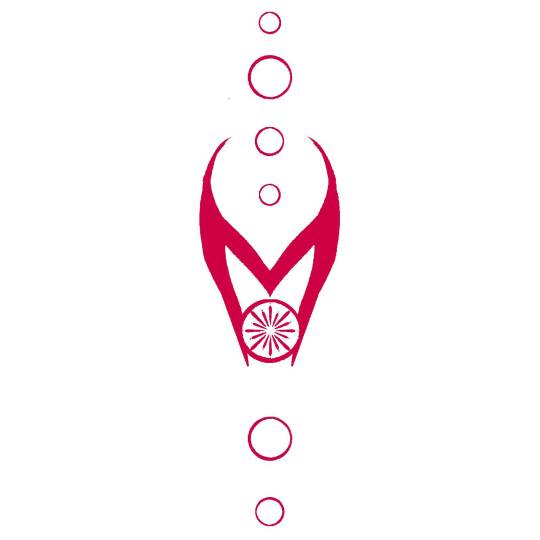
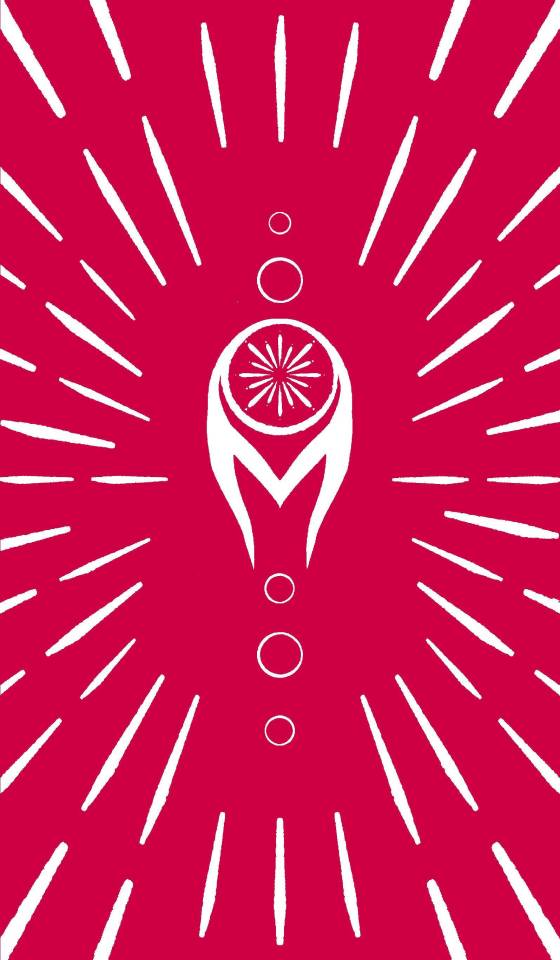
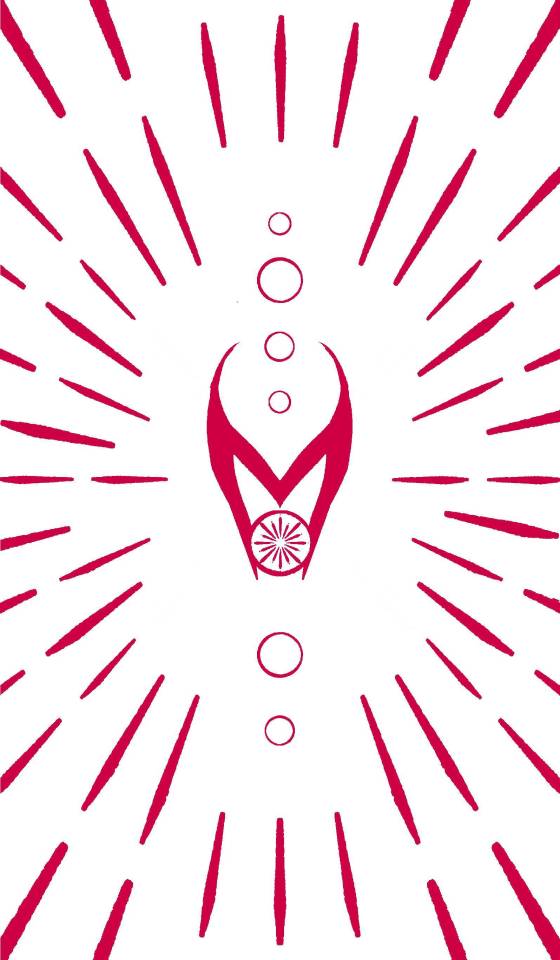
Natalya + Django Maximoff
This is part 9 of my sigil project, where I design emblems, sigils, seals, and runes for my favorite Marvel magic characters. After doing the entire living Maximoff family, I thought it might be nice to design for their predecessors.
These designs were inspired by the dharmachakra, which has become a prominent cultural symbol of the Roma people, and is featured on the international Romani flag. I've also designed a pair of composite-letter name sigils using the Theban alphabet, which I'm using to distinguish "witch" characters from other types of magicians in the Marvel canon.
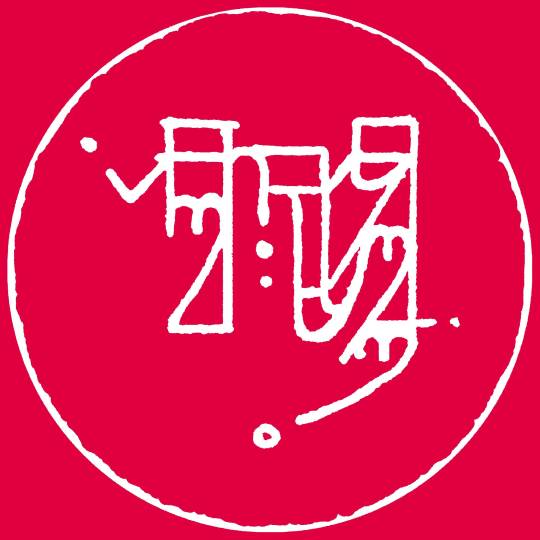
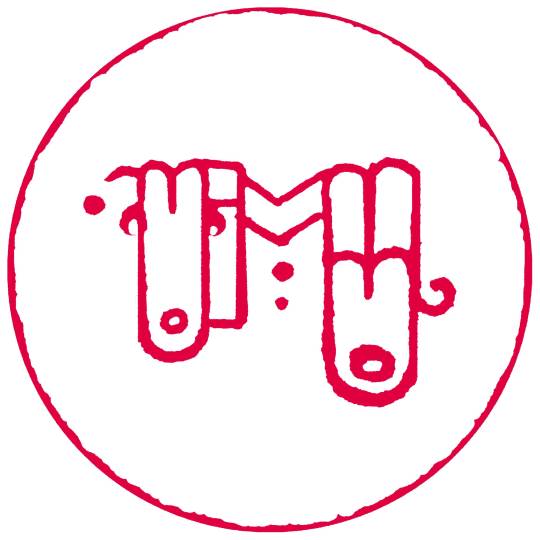
Speaking of witches, I also designed a similar sigil for Agatha Harkness, who was Natalya's peer and, later, a mentor to her daughter, Wanda. The emblem on the left is based on Agatha's brooch.

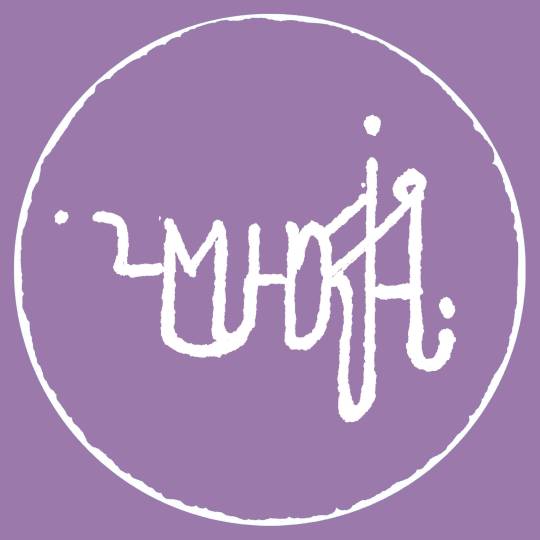
I recognize that Natalya is a polarizing character, so I thought I would share some of my thoughts, as a person of Roma descent, under the cut. I'll say up front that I, personally, get something out of bringing my perspective to imagery and narratives that are lacking in authenticity, but I respect that others may not feel the same way
Natalya Maximoff is depicted a Roma woman from a traveling community in the Balkan region. She died protecting her children from the High Evolutionary on Mount Wundagore, and the twins were subsequently adopted by Natalya's brother, Django, and his wife, Marya. While uncovering Natalya's past, Wanda learns that her mother practiced witchcraft as part of her family trade. Natalya was the Scarlet Witch of her time, and Django, who was a spiritual leader in his community, possessed mystical abilities as well. Wanda's magical aptitude is, therefore, hereditary, and we are meant to understand that the Scarlet Witch title is part of her cultural lineage.
This drew a lot of rightful criticism, particularly from Jewish and Roma readers. For one thing, the retcon removes the Maximoffs' Jewish ancestry, and distances them from representations of Romani Holocaust survivors. Natalya and Django are also played straight as mystical "gypsy" stereotypes, which are, unfortunately, more common in American media than any sort of accurate representation. That said, the circumstances of these characters' lives-- such as their lifestyles and the challenges they face-- are reflective of Romani history in that part of Europe. This is very similar to Doctor Doom's family-- under all of the fantasy and genre trappings, these stories demonstrate an awareness of class and race that is rarely afforded to Romani people in American media. Unfortunately, writers tend to overlook these details, which reduces the characters to racist tropes. Nevertheless, Saladin Ahmed's Quicksilver proved that these characters can be used for informative, meaningful representation-- you just have to do the research and be respectful.
The magic stuff is complicated, and I find that Roma tend to really differ on how it should be approached. No group is a monolith, least of all one so diverse and wide-spread. Here's what I know-- witchcraft is a part of Romani history. Divination, folk medicine, and even spellcasting are all trades that Roma families have historically practiced. Some of these skills, derived from ancestral knowledge, have been used for healing within communities, but they've also been used by entrepreneurial folks to make money and provide for their families. Roma have historically faced job and housing discrimination, so this just one way of the ways that they found to get by.
Now, the Marvel universe is a setting where magic is real and tangible, and witches have actual supernatural powers. It makes sense that real-world magical practices would be afforded the same type of power in the Marvel world-- families like the Maximoffs and von Dooms would, logically, exist in that setting. The problem, as always, is authenticity. If we're being honest, I think that Romani witch characters, like Wanda and Natalya, are going to persist in the media whether we like it or not. I'm more interested in creating an authentically Roma image of the heroic witch than I am in stamping that archetype out entirely.
62 notes
·
View notes
Text

Hello all! I recently realized that I had a couple of characters that I just left their story hanging (sorry my pixel children) and I’ve been looking for a challenge that I can use to show how their lives have been since their story ended. I had no luck finding one that was quite what I needed so I guess it was time to make one myself! It’ll take me some time to work on this myself but I figured I’d share what I came up with anyway.
The Aspirations photo challenge!
This is designed as a flexible daily photo challenge. I’ll be listing it in alphabetical order but I’m definitely not keeping to this order myself. Obviously themed off of the sims 4 aspiration categories, some days will have only an overarching theme while other days also have a couple of specific options. Feel free to interchange prompts/days freely to what fits with your characters/story. Post every day, once a week, once a month, doesn’t matter just do what works for you. If anyone does this I hope you like it!
Animal [Friend of the animals]
Athletic [Bodybuilder]
Creativity [Painter extraordinaire | Musical genius | Best-selling author | Master actor/actress | Master maker]
Deviance [Public enemy | Chief of Mischief]
Family [Successful lineage | Big happy family | Vampire family | Super parent]
Food [Master chef | Master mixologist]
Fortune [Fabulously wealthy | Mansion baron]
Knowledge [Renaissance sim | Nerd brain | Computer whiz | Master Vampire | Archaeology scholar | Spellcraft & Sorcery | Academic]
Love [Serial romantic | Soulmate]
Location [City native | Strangerville mystery | Beach life]
Nature [Freelance botanist | The curator | Angling ace | Outdoor enthusiast | Jungle explorer | Purveyor of potions | Eco innovator]
Popularity [Joke star | Party animal |Friend of the world | Leader of the pack | good vampire | World-famous celebrity]
Bonus Child Aspirations:
Artistic prodigy
Rambunctious scamp
Social butterfly
Whiz kid
81 notes
·
View notes
Text
The Alphabet Legacy Challenge Rules
Hello! I am starting a new challenge which is half made-up and half based on other challenges so if anyone else wants to give it a go, here are the rules. This challenge is across 27-ish generations taking you through various themes. I’m playing it with basegame, although I imagine it would be better with expansion packs. Although, seeing as I’m just playing with basegame, I’ve made it harder for if you have expansion packs because that’s just the way it works :) Cheats, mods, CC, whatever, everything is allowed. If twins or triplets are born where the rules don’t allow it, exceptions can be made: you don’t have to kill any of your children. I appreciate there’s a lot of writing and you can probably figure most of it out for yourself so here’s an overview of the themes:
Animals, Books, Cooking, Darkness, Emotion, Family, Gardening, History, Innocence, Jokes, Kindness, Legends, Music, Nerd, Outgoing, Painting, Quietness, Religion, Science/Space, Travel, Unfriendly, Violin, Work-orientated, Xenophobia, Youth, Zany
Here’s how to play:
First, create a sim to be your beginner sim. This sim can be whatever gender you want and can have whatever traits you want. You can also choose whatever name you want for this sim and there are no rules regarding it. Add your sim to whatever world you want and have them meet and marry a townie of your choice. This can also be whatever you want, but one sim must be able to get pregnant and the other must be able to impregnate other sims. You could also create a sim to marry your beginner sim and add them to the world but you cannot create a married couple in the first place because I say so.
Once married, your couple should start a family. The children must be naturally the couples’ own, there is no adoption in this challenge. Have however many children you want, but they must all have names beginning with A. These will be the first generation for the challenge. If you want, give them animal themed names but these must still begin with A. If available, these children must have the trait either ‘cat lover’ or ‘dog lover’ from childhood.
Once the children have grown up, choose one to be the heir through whatever method you want. For every generation, you must master the career and aspiration before moving on. The sims’ appearances must be based on the theme for their generation and their names must start with that letter of the alphabet. Here are the rules for each generation:
A - animals:
-Expansion packs: Friend of the animal aspiration, master vet career, cat or dog lover trait from childhood, three or more children, rest of household filled with pets
-Basegame: Big happy family or angling ace aspiration (must keep all the fish if angling ace), any career and traits, three or more children
B - books:
-Bestselling author aspiration, bookworm trait and any others, master writing career, master writing skill, own a bookshelf, purchase all available books, no more than two children
C - cooking:
-Master Chef aspiration, glutton or foodie trait and any others, master culinary career, master cooking, baking if available and gourmet cooking skill (and mixology if you want to make it harder), most expensive kitchen with one of all available type of item, four or more children
D - darkness:
-Deviance or Master Vampire aspiration, traits from list below, criminal career, house must be just black and grey, no more than three children
-Traits from list: Evil, Kleptomaniac, Gloomy, Hot-headed, Erratic, Materialistic, Neat, Slob, Insider, Hates children, Jealous, Loner, Mean, Non-committal, Paranoid
E - emotion:
-Soulmate aspiration, any traits listed as emotional, creative career, must call or visit family members once a week, three or more children
F - family
-Any family aspiration, family-orientated trait and any others, freelancer and(?)/or babysitter career, parenting skill if available, six or more children and must be best friends with all
G - gardening
-Freelance botanist aspiration, loves outdoors trait and any others, gardener if available or no career, gardening, flower arranging and fitness skills, up to four children
H - history
-Renaissance sim aspiration, geek and any other traits, archaeologist career if available or writer, archaeology skill if available, four or more children
I - innocence
-Aspiration from list below, good, cheerful and any other trait, career from list below, no WooHoo until married, only one romantic partner, two or more children
-Aspiration options (any from these categories): Animal, athletic, creativity, family, food, knowledge (except master vampire), location (except StrangerVille), love, nature, popularity (except party animal and world famous celebrity)
-Career options: astronaut, athlete, conservationist, culinary, freelancer, gardener, scientist, doctor, entertainer, painter, tech guru, writer
J - jokes
-Joke Star aspiration, goofball and two other traits, comedian career, comedy skill, two or more children
K - kindness
-Friend of the world aspiration, good, cheerful and any other trait, conservationist career if available or any other except criminal and critic, charisma skill and wellness if available, must accept every phone call and say yes to everyone who wants to come over or invite you to an event, four or more children
L - legends
-Renaissance sim aspiration, genius, geek and any other trait, archaeologist career if available or writer, master writing skill - all book names are your own legends, three or more children
M - music
-Musical genius aspiration, music lover and any other traits, musician career, master guitar, violin and piano skills and if available, master pipe organ and singing skills, two or more children
N - nerd
-Nerd brain aspiration, geek, genius and another trait, tech guru career, logic, programming and video gaming skills, one or more children
O - outgoing
-Any popularity aspiration, outgoing, self-assured and another trait, career from list below, charisma and one other skill, four children
-Career options: astronaut, athlete, conservationist, criminal, critic, freelancer, actor, detective, scientist, entertainer, military, politician, secret agent, social media, style influencer, writer
P - painting
-Painter extraordinaire aspiration, art lover and two other traits, artist career, painting skill, three children
Q - quietness
-Any nature aspiration, loner and two other traits, no career, gardening skill and wellness if available, house built in smallest available lot, one child
R - religion
-Big happy family aspiration, good and two other traits, any career, must try to correct any negative relationships, no WooHoo until married, five or more children
S - science and space
-Nerd brain aspiration, genius and two other traits, scientist or astronaut career, rocket science and logic skills, one or two children
T - travel
-Any location aspiration (if not, painter extraordinaire and must paint from reference for all paintings as soon as able), any appropriate traits, freelancer career, must live in five different worlds of your choice over life (or three with basegame as only those are available), two children
U - unfriendly
-Any deviance aspiration, mean or evil and any other traits, criminal career, mischief skill, one or two children
V - violin
-Musical genius aspiration, music lover, art lover and another trait, musician career, violin skill, live in small house with special little violin room, one or two children
W - work-orientated
-Fabulously wealthy aspiration, any traits, any full-time career except freelancer, skills required for job must be mastered, one child
X - xenophobia (fear of foreigners)
-Successful lineage aspiration, paranoid if available or mean and any other traits, must stay in world where you were born and marry someone with similar appearance, no friends as no one likes you, four or more children, OPTIONAL: learn your lesson later in life
Y - youth
Party animal aspiration, childish and any other traits, no career, live with parents, children only out of marriage, first child is teenage pregnancy, dye hair when elder, one or two children
Z - zany (weird)
Any aspiration, any traits, any career, master any two skills, any number of children
#sims 4#sims 4 story#simblr#sims 4 challenge#new sims 4 challenge#new sims challenge#alphabet legacy challenge#alphabet legacy challenge rules
14 notes
·
View notes
Text
Maha Mala Presents: Ask Anuradhika
Anuradhika Roy is a certified holistic healing practitioner. Anuradhika’s constant pursuit of self-growth is evident in her long list of qualifications, which include Reiki, Crystal healing and more. A long-time supporter of Maha Mala’s mission to bring you closer to your spiritual self through means of handmade malas and chakra jewellery, we got talking with Anuradhika about her journey to realising her inner being, as she shared advice for others hoping to follow the path.
Tell us about your journey. Where are you from? What do you do?
I have lived in Chicago for the past 30 years, but I still say I’m from Delhi because that’s where I was born and brought up– and where my heart is. Over the years, I’ve come to realize that the resonances, emotions, significance and meaning of “home” are always present in my heart, so I can honestly say that wherever I am, that’s where I’m from!
I feel fortunate to be following my passion. Intuitively guiding and supporting clients who are in the process of finding themselves, falling in love with themselves, figuring out who they truly are and what their life-purpose is, gives me the greatest joy. There is something very special in facilitating others on their divine journey and witnessing them blossom into their authentic self.
My journey formally started with getting certified in Reiki about twenty-five years ago. Since then, Reiki has opened up the world to me, leading me from one modality to the next. Seriously, my pursuit of personal growth has been so broad, my list of qualifications resembles alphabet soup! From attracting Abundance and working on Ancestral Healing; Bach Flower Remedies to Crystal Healing; Dream Interpretation to EFT and Elemental Space Clearing; Past Life Regression to Shamanic Healing; Siddh Kundalini Healing to Soul Coaching®; Soul Collage® to Tarot reading, and even competitive Ballroom dancing (that one took my understanding of the connection between mind, body, and spirit to a whole new level!), it’s been a fabulous, sometimes challenging, but always fascinating journey. What I love most is being able to draw from this diverse knowledge-base to create a unique, balanced and personalised curriculum for each special person I work with.
Looking back, I’ve been a spiritual seeker my entire life– constantly engaged on one level or another in connecting with that pure spark of divine light of “inner truth” that is within each of us. In trying to find a better version of myself, pushing to grow internally, exploring the meaning of “healing” and “wholeness”, and experiencing profound transformation, I have found my soul-purpose. Of course, being part of a lineage of healers has informed my journey greatly – my mother and grandmother gave me my roots, and my child gives me wings to fly with them.
Tell us about your spiritual and meditative practices.
I love early mornings – the quiet peace before the rest of the house awakens is the best part of my day and the perfect time for my practice.
Daily practice is essential to my well-being, and it starts and ends with gratitude (this is a theme that runs through everything!). As my eyes open, I give thanks for a new day and new opportunities for change. Reiki follows, with self-treatment and prayers and intentions for others, and of course, gratitude to all who have gone before me in the tradition. Then it’s time for a short meditation and chanting, using one of my beautiful Maha Mala gemstone malas. Breath-work brings my ritual to a close, and I end by drawing a guidance card for inspiration from one of my favourite oracle decks. At night before bed, I make sure to reflect on the day and note three things for which I am grateful.
My weekly practice involves cleaning, resetting and rededicating my altar, using crystals, candles, and sacred objects. It’s always fun to see who and what calls to be included!
And of course, my two monthly practices involve New Moon intention setting, and Full Moon gratitude and reflection.
In order to change the world, one must start with the Self. Inner work and healing create a transformative ripple-effect that vibrates out into the family, one’s community, and out into the world. And all of a sudden, with ease and grace, one’s life starts to change…
What do you do to ground yourself in your spiritual practices in these uncertain times?
Gratitude is my secret weapon and my super-power. Remembering to be grateful keeps me focused on the positive. It’s so easy to get caught up in the insidious vibrations of fear, uncertainty, and grief. Now especially, it’s so important to find even small things to be grateful for. Where intention and attention go, energy flows. Whenever I feel myself wavering or doubting, I ask myself what I’m grateful for in that moment.
In practising gratitude on any level– from fresh food to the perfect parking place or even water– you begin to attract more things to be grateful for. As you change your inner vibrations, you create a ripple effect out into the world– we really can be the change we want to see!
Rubbing salt on the soles of my feet, walking barefoot on the grass, sitting in nature, playing in the mud (no, seriously, try it– just dig into the mud, add water, and remember your childhood as you let yourself have fun!) or chopping garden-fresh vegetables are all activities that not only ground me but bring me back into the moment with mindfulness and gratitude.
Read more at https://www.mahamala.com/bhakti-blog/ideas/maha-mala-presents-ask-anuradhika/
0 notes
Link
A Virus Variant by Any Other Name … Please 20H/501Y.V2. VOC 202012/02. B.1.351. Those were the charming names scientists proposed for a new variant of the coronavirus that was identified in South Africa. The convoluted strings of letters, numbers and dots are deeply meaningful for the scientists who devised them, but how was anyone else supposed to keep them straight? Even the easiest to remember, B.1.351, refers to an entirely different lineage of the virus if a single dot is missed or misplaced. The naming conventions for viruses were fine as long as variants remained esoteric topics of research. But they are now the source of anxiety for billions of people. They need names that roll off the tongue, without stigmatizing the people or places associated with them. “What’s challenging is coming up with names that are distinct, that are informative, that don’t involve geographic references and that are kind of pronounceable and memorable,” said Emma Hodcroft, a molecular epidemiologist at the University of Bern in Switzerland. “It sounds kind of simple, but it’s actually a really big ask to try and convey all of this information.” The solution, she and other experts said, is to come up with a single system for everyone to use but to link it to the more technical ones scientists rely on. The World Health Organization has convened a working group of a few dozen experts to devise a straightforward and scalable way to do this. “This new system will assign variants of concern a name that is easy to pronounce and recall and will also minimize unnecessary negative effects on nations, economies and people,” the W.H.O. said in a statement. “The proposal for this mechanism is currently undergoing internal and external partner review before finalization.” The W.H.O.’s leading candidate so far, according to two members of the working group, is disarmingly simple: numbering the variants in the order in which they were identified — V1, V2, V3 and so on. “There are thousands and thousands of variants that exist, and we need some way to label them,” said Trevor Bedford, an evolutionary biologist at the Fred Hutchinson Cancer Research Center in Seattle and a member of the working group. Naming diseases was not always so complicated. Syphilis, for example, is drawn from a 1530 poem in which a shepherd, Syphilus, is cursed by the god Apollo. But the compound microscope, invented around 1600, opened up a hidden world of microbes, allowing scientists to start naming them after their shapes, said Richard Barnett, a historian of science in Britain. Still, racism and imperialism infiltrated disease names. In the 1800s, as cholera spread from the Indian subcontinent to Europe, British newspapers began calling it “Indian cholera,” depicting the disease as a figure in a turban and robes. “Naming can very often reflect and extend a stigma,” Dr. Barnett said. In 2015, the W.H.O. issued best practices for naming diseases: avoiding geographic locations or people’s names, species of animal or food, and terms that incite undue fear, like “fatal” and “epidemic.” Scientists rely on at least three competing systems of nomenclature — Gisaid, Pango and Nextstrain — each of which makes sense in its own world. Updated March 2, 2021, 10:34 a.m. ET “You can’t track something you can’t name,” said Oliver Pybus, an Oxford evolutionary biologist who helped design the Pango system. Scientists name variants when changes in the genome coincide with new outbreaks, but they draw attention to them only if there is a change in their behavior — if they transmit more easily, for instance (B.1.1.7, the variant first seen in Britain), or if they at least partly sidestep the immune response (B.1.351, the variant detected in South Africa). Encoded in the jumbled letters and digits are clues about the variant’s ancestry: The “B.1,” for instance, denotes that those variants are related to the outbreak in Italy last spring. (Once the hierarchy of variants becomes too deep to accommodate another number and dot, newer ones are given the next letter available alphabetically.) But when scientists announced that a variant called B.1.315 — two digits removed from the variant first seen in South Africa — was spreading in the United States, South Africa’s health minister “got quite confused” between that and B.1.351, said Tulio de Oliveira, a geneticist at the Nelson Mandela School of Medicine in Durban and a member of the W.H.O.’s working group. “We have to come up with a system that not only evolutionary biologists can understand,” he said. With no easy alternatives at hand, people have resorted to calling B.1.351 “the South African variant.” But Dr. de Oliveira pleaded with his colleagues to avoid the term. (Look no further than the origins of this very virus: Calling it the “China virus” or the “Wuhan virus” fed into xenophobia and aggression against people of East Asian origin all over the world.) The potential harms are grave enough to have dissuaded some countries from coming forward when a new pathogen is detected within their borders. Geographical names also quickly become obsolete: B.1.351 is in 48 countries now, so calling it the South African variant is absurd, Dr. de Oliveira added. And the practice could distort science. It is not entirely clear that the variant arose in South Africa: It was identified there in large part thanks to the diligence of South African scientists, but branding it as that country’s variant could mislead other researchers into overlooking its possible path into South Africa from another country that was sequencing fewer coronavirus genomes. Over the past few weeks, proposing a new system has become something of a spectator sport. A few of the suggestions for name inspiration: hurricanes, Greek letters, birds, other animal names like red squirrel or aardvark, and local monsters. Áine O’Toole, a doctoral student at the University of Edinburgh who is part of the Pango team, suggested colors to indicate how different constellations of mutations were related. “You could end up with dusty pink or magenta or fuchsia,” she said. Sometimes, identifying a new variant by its characteristic mutation can be enough, especially when the mutations gain whimsical names. Last spring, Ms. O’Toole and her collaborators began calling D614G, one of the earliest known mutations, “Doug.” “We’d sort of not had a huge amount of human interaction,” she said. “This was our idea of humor in lockdown No. 1.” Other nicknames followed: “Nelly” for N501Y, a common thread in many new variants of concern, and “Eeek” for E484K, a mutation thought to make the virus less susceptible to vaccines. But Eeek has emerged in multiple variants worldwide simultaneously, underscoring the need for variants to have distinct names. The numbering system the W.H.O. is considering is straightforward. But any new names will have to overcome the ease and simplicity of geographic labels for the general public. And scientists will need to strike a balance between labeling a variant quickly enough to forestall geographical names and cautiously enough that they do not wind up giving names to insignificant variants. “What I don’t want is a system where we have this long list of variants that all have W.H.O. names, but really only three of them are important and the other 17 are not important,” Dr. Bedford said. Whatever the final system is, it also will need to be accepted by different groups of scientists as well as the general public. “Unless one really does become the kind of lingua franca, that will make things more confusing,” Dr. Hodcroft said. “If you don’t come up with something that people can say and type easily, and remember easily, they will just go back to using the geographic name.” Source link Orbem News #Variant #Virus
0 notes